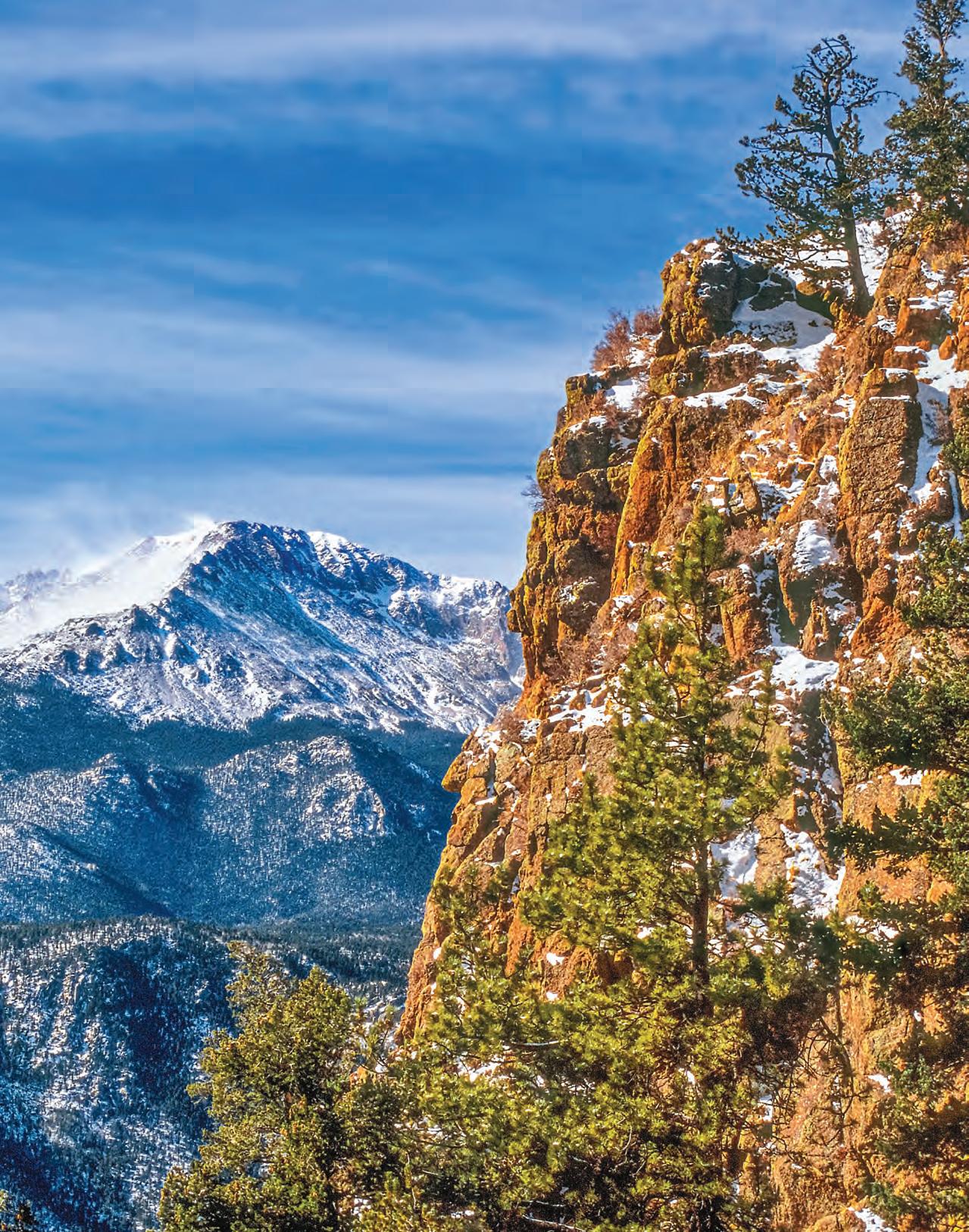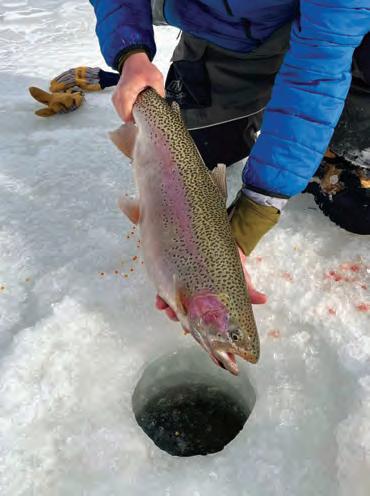Barns

NOVEMBER/DECEMBER 2023















NOVEMBER/DECEMBER 2023













16
Barns in Winter
Photographers can’t turn their lenses away from the magnificent contrast of time-worn barns, undisturbed snow and Colorado mountain peaks – and maybe a snowy owl or two.
By Tom Hess
24 DIA Helpers
Meet the people and other creatures who help navigate your way through Denver International Airport crowds and construction. By Tom Hess
32 Colorado Farm Brewery
Fearless farm kids grew up to embrace innovation on their great grandfather’s San Luis Valley land and keep it in the family through malting and a brewery. By Tom Hess
44 Craving Colorado
The Roaring Fork Valley makes hearts race on its slopes and in its kitchens –the perfect pairing of snow and smoked brisket and other delights.
By Carla Tracy


Publisher & Executive Editor
Chris Amundson
Associate Publisher
Angela Amundson
Senior Editor
Tom Hess
Photo Coordinator
Amber Kissner
Design
Karlie Pape, Hernán Sosa, Rufus Agbede
Advertising Sales
Marilyn Koponen
Subscriptions
Lea Kayton, Katie Evans, Janice Sudbeck
Colorado Life Magazine PO Box 270130 Fort Collins, CO 80527 970-480-0148
ColoradoLifeMag.com
SUBSCRIBE
Subscriptions are 1-yr (6 issues) for $30 or 2-yrs (12 issues) for $52. Please call, visit ColoradoLifeMag.com or return a subscription card from this issue. For fundraising and corporate rates, call or email subscriptions@coloradolifemag.com.
ADVERTISE
Advertising deadlines are three months prior to publication dates. For rates and position availability, please call or email advertising@coloradolifemag.com.
CONTRIBUTE
Send us your letters, stories, photos and story tips by writing to us, visiting ColoradoLifeMag.com or emailing editor@coloradolifemag.com.
COPYRIGHT
All text, photography and artwork are copyright 2023 by Flagship Publishing Inc. For reprint permission, please call or email publisher@coloradolifemag.com.

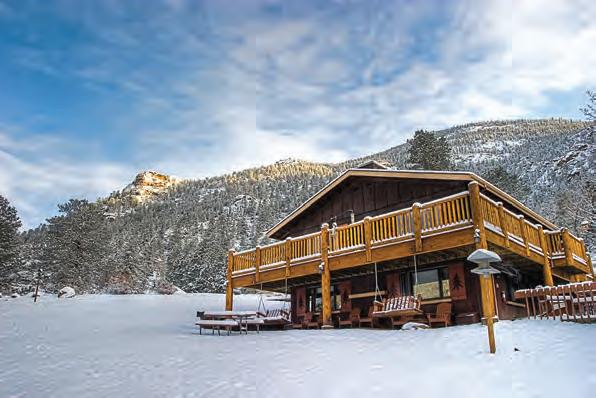

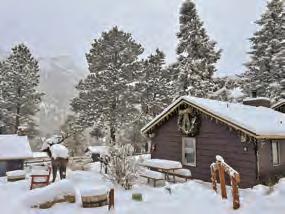



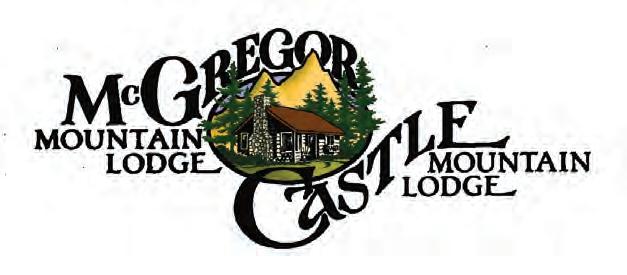


VOLUME 12 NUMBER 6

ON THE COVER
Wilson Peak rises above the weather-worn Hoggs Ranch dairy barn near Telluride. Story begins on page 16.
PHOTOGRAPH BY ANDREW CARAFELLI
Sluice Box

Steamboat Springs, p 16
Rifle, p 57
Glenwood Springs, p 44
Aspen, p 44
Buena Vista, p 16
Gunnison, p 16
Telluride, p 16
Model T’s pilotless ride in Pueblo. Beer flows at Aurora control tower without airport. The quilting ladies of Last Chance never quit. Snow and cold won’t stop Pikes Peak hikers.
Tune
Coloradan poets capture what “Only in Colorado” means to them.
The amazing cranberry makes the leap from the relish dish onto main the dishes.

Sterling, p 16
Denver, p 24
Aurora, p 10
Last Chance, p 11
Palmer Lake, p 16
Colorado Springs, p 12
Pueblo, p 8
Creede, p 51
Pagosa Springs, p 53
Alamosa, p 32
50 Go. See. Do.
History Colorado Center honors the 10th Mountain Division and the late photographer John Fielder. Drainage ponds become hockey rinks for a tournament beneath Creede’s towering cliffs’ Competitors in Pagosa Springs’ Red River BB Gun Biathlon ski around Yamaguchi Park and fire at targets that match their race number.
Rifle Falls State Park offers calm campsites a short walk downstream from a roaring triple waterfall. 60 Peak
Pikes Peak is a perfect setting for a classic country holiday season with photographer Joshua Hardin.

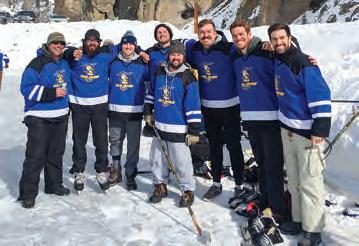


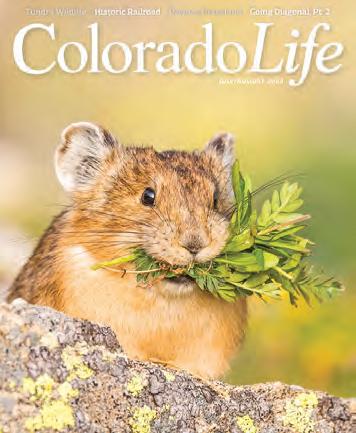






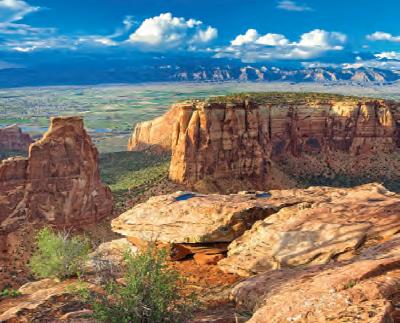




by TOM HESS
Gary Micheli became Pueblo’s oldest firefighting rookie at age 40, at that time the oldest Pueblo firefighting rookie in a century. Born in Walsenburg, he’s Catholic, so his fellow firefighters called him “The Pope.” He’s now director of the Hose Co. 3 Museum. Dedicated to the truth of matters, he can’t account for what hap-
pened in March 2006 when a fire chief’s Model T seemed to drive itself from the museum’s back lot to its front entrance.
The Model T’s pilotless journey would seem far-fetched if not for eyewitness accounts. A couple living in the apartment building on Evans Avenue, overlooking the museum’s back lot, said they watched the car narrowly miss their parked van, then pass through a 15-foot-wide gap
between tombstones on display along the Evans sidewalk beside the Davis Mortuary Building. No one was behind the wheel. Diners and waitstaff in the Broadway Tavern and Grille watched the car as it traveled at about 20 miles an hour down Broadway before turning sharply into the museum.
“We parked the vehicle in the back parking lot, left it idling, facing south-
Retired Pueblo firefighter Gary Micheli sits at the wheel of the remodeled 1924 Ford Model T that he and other witnesses say drove itself around the block of the Hose Co. 3 Museum in downtown Pueblo.

east, and we come back up front and backed a trailer into the entrance,” Micheli said. “All of a sudden, we hear this big bang in here. This car traveled 530 feet, two 90 degree turns and a 45 trying to get back in the station all by itself. How did it start, how did it move? I can’t explain it.”
Hose Co. 3 operated from 1895 to 1979, built by Masonic lodge members. Paranormal enthusiasts point to the building’s troubled history as a potential source of paranormal activity. The building’s designer died in the Eden train wreck of 1904, outside of Pueblo, the greatest death toll from a train wreck in America at the time. No deaths have been known to occur in Hose Co. 3.
Former Colorado firefighter and published paranormal researcher Richard Estep brought three teams to Hose Co. 3, equipped with a tool of the ghost trade: the K-II Enterprises Safe Range EMF, which detects electromagnetic fields, its LED array flashing from green to red depending on the supposed presence of ghosts. The teams found none, not with the K-II and not by observation. Estep said further observation might be warranted. After all, what accounts for the Model T?
Visitors may not spot a ghost, but they can see an antique fire alarm system, circa 1883, installed before the advent of telephones. Flipping a switch sent a telegraph to other stations, ringing alarm bells in those stations, giving rise to the phrase, “five-alarm fire.”
Micheli said the museum’s crown jewel is an 1882 Orman Hose Cart, recovered from a local lumber yard and restored. Truly haunting to firefighters are fires that destroy historic buildings and kill people. Framed photos in the Hose Co. 3 Museum picture several of the city’s worst conflagrations, such as the five-story Central Block Building fire of 1953 – a $1 million loss that killed a famous attorney and destroyed another landmark, the McCarthy Building. Central Block’s bricks “popped off” from the heat.
Visit Hose Co. 3 Museum, or find your lost car there, at 116 Broadway Ave. For more information, log on to hosecono3. com, or call (719) 821-1273.
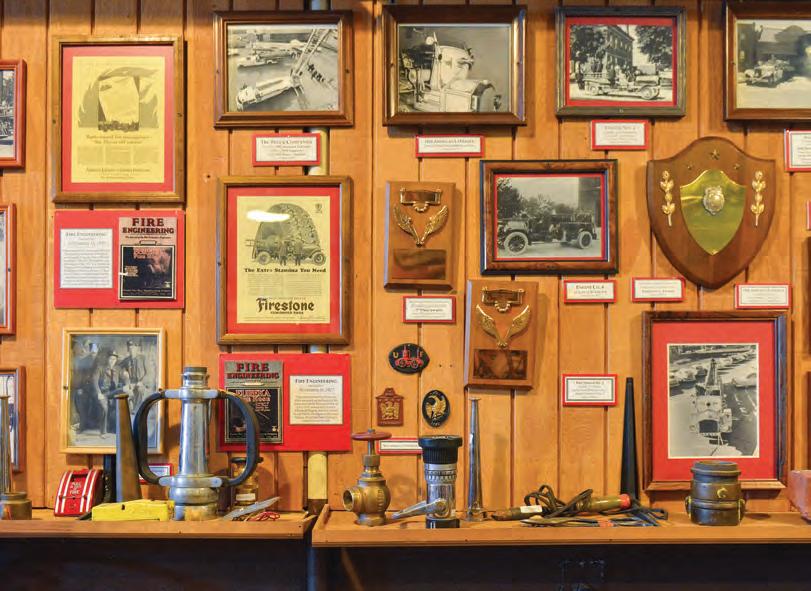
Pueblo’s Hose No. 3 Museum houses firefighting memorabilia, including nozzles (above) and displays patches from 800 other fire departments (below).

by TOM HESS
All that remains of Denver’s first major airport, built in 1929 and receiving its last flight in February 1995, is a 12-story flight control tower that rises above what is now the Central Park neighborhood. The first three floors of the tower house FlyteCO – a company offering beer, recreation and aviation memories.
Co-owner Eric Serani grew up in his grandfather Ron Cothern’s 1946 Aeronca Champion, which he says flew about as slow as the Oscar Mayer Wienermobile they once saw outpacing them. They would fly from the Rocky Mountain Metro Airport in Broomfield to Greeley for pancakes at Barnstormer’s Grill.
Ron Cothern died in 2005, before he could help his grandson cross the finish line in earning his pilot’s license. The Experimental Aircraft Association (EAA) Chapter 43 in Broomfield stepped in. Serani later worked for Boeing in Seattle, helping design the 737 MAX, but returned to Colorado and moved into
Denver’s Jefferson Park neighborhood, next to Morgan O’Sullivan, who shared his interests in beermaking.
Serani received the gift of a Mr. Beer home-brewing kit in 2008. He hasn’t stopped making beer since.
Senari and O’Sullivan cut a hole in their fence, installed a gate, and started hosting beer parties, testing their experimental brews and barbeque on friends and neighbors. They built a stage for stand-up comedy, and hosted paper airplane contests.
Once they were ready to serve their beer to the public, Serani, O’Sullivan and Jason Slingsby, whom Serani met in engineering classes at the University of Colorado-Boulder, opened the first FlyteCO location in the Berkeley neighborhood. That brewery occupies an 1800s electric plant that once powered west Denver’s streetcars. The trio opened the control tower location in 2022.
The tower includes a mural above a three-lane bowling alley picturing a jetliner on a now-demolished elevated
The co-owners of FlyteCO Brewery – Jason Slingsby, Morgan O’Sullivan and Eric Serani – gather on the top floor of the 12-story Stapleton Tower.
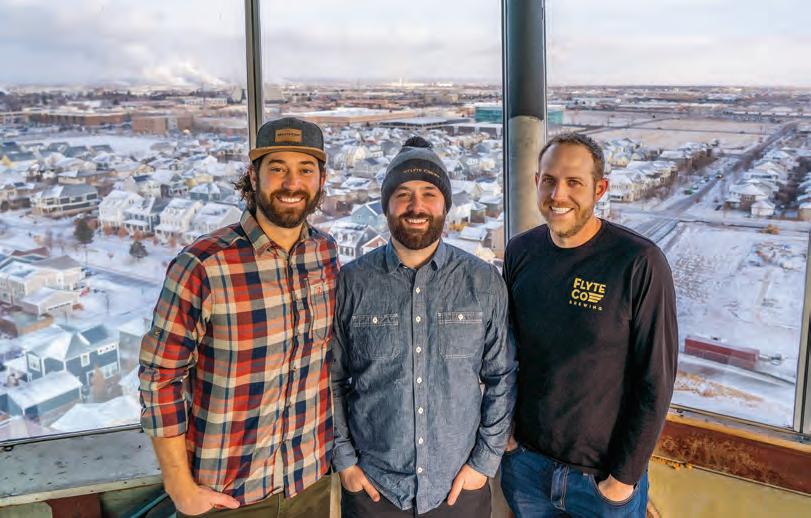
runway that once led planes above I-70. In the bar is a retired runway sign from Denver International Airport: F12 16L. Live air traffic control chatter plays in the bathrooms.
Serani flies each August in the RV-10 aircraft he and his dad built to pick up several hundred pounds of fresh hops from Billy Goat Hop Farm in Montrose –hops that FlyteCO uses in creating a seasonal IPA called “Hop is My Co- Pilot.”
The hops fit into Serani’s plane, but others join him in a squadron just to experience the beauty of a flight over Colorado. Serani says his wife Grace understands his absences.
“She 100 percent supports it,” Serani said. “Piloting is my happy place. It’s calming and peaceful up there.”
Serani said he’s often asked when he’ll take his 1-year-old son Wyatt on a flight.
“Probably in a year or two,” Serani said. His grandfather took him on his first flight at age 3.


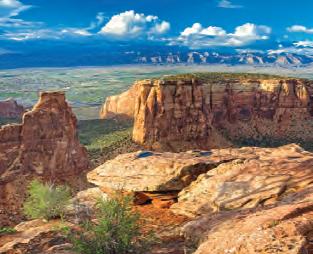



by TOM HESS
The basement of Howard United Methodist Church, at the four-way stop where U.S. 36 and Colorado Highway 71 intersect in Washington County, is a busy place on Thursdays. That’s because ladies from all over eastern Colorado bring their latest quilt projects, a potluck dish, and an ornery sense of humor.
The Last Chance Quilters, named for what’s left of the town where the church stands, have met in one place or another on Colorado’s Eastern Plains since 1918, the oldest quilting club west of the Mississippi.
Club leader Tinka Hiner, the “baby” of the group at age 62, leaves her husband Wayne behind in their farm home near Lindon 8 miles east of Last Chance, affording him a respite from the incessant buzzing of her quilting machine. He doesn’t really mind the noise, though: It’s a reminder that quilting keeps her home, except Thursdays.
The women meet from 8:30 a.m.-5 p.m., and swap stories about children and grand-children – but no politics, religion or gossiping, please. They throw thimbles at each other just to liven things up.
The women also bring their scraps: torn-up old cloths, curtains, kids t-shirts from school sports – whatever will prove
useful in a quilt, so long as its corners are tight and the borders match.
Tinka recalls joining the club with her grandmother, the late Opal Roderick, when she was 3 or 4 years old. Roderick started attending the club in 1952. Roderick told stories of members rotating through each other’s homes, the women driving with their longer fabric rolls hanging out the car windows, exposed to the plumes of dust in summer and gales of snow in winter on the area’s unpaved roads.
Many of the current quilters are the granddaughters of previous Last Chance quilters. The forebears are not forgotten, but there’s only memories, no written history.
Oral history says Last Chance got its name from a gas station operator who had put up a sign at the unnamed intersection of 36 and 71 adjoining the family homestead. The sign read “Last Chance for Gas.” The name stuck.
U.S. 36, formerly Primary Road No. 102 beginning in the 1920s, stretched between Denver and western Kansas. Ford Model As of the era got about 13 miles a gallon, so the Last Chance station was a motorist’s lifesaver.
Quilting time is a lifesaver for the quilters of Last Chance, something they can look forward to, the one opportunity on their schedule to share their grandchild stories.
Title:
U.S. POSTAL SERVICE • STATEMENT OF OWNERSHIP MANAGEMENT AND CIRCULATION (REQUIRED BY 39 U.S.C. 3685)
(2.) Publication #9380. (3.) Date of
by TOM HESS
Five men – hikers who would one day be known as The Frozen Five – trudged up Pikes Peak on Dec. 31, 1923, carrying 175 pounds of fireworks. After reaching the summit, they set off a 9 p.m. status flare, and at midnight, a full fireworks show, loading one explosive at a time and ducking or cover.
That hike marked the first year of the AdAmAn Club, an invitation-only group of about 30 men and women who make the annual New Year’s Eve hike up America’s Mountain and fill the sky above Colorado Springs with color.
The Frozen Five survived and added one new member a year, thus the name AdAmAn (pronounced “add a man”). Those who stop making the journey remain members for life.
Donald Sanborn of Colorado Springs is one such member. He no longer joins in something he jokingly calls “stupid” –he climbed from 1996 to 2017 – but continues to speak at presentations of the club, as he did recently at the Garden of the Gods Visitor Center. He’s well versed in its history of the adverse conditions at 14,115 feet.
“In the old summit house, which was open from the 1880s through 1963, they put the fireworks in a room that had a little hole in the wall,” Sanborn said. “One winter, snow completely packed the room, so they had to dig to reach the fireworks, but they dug through to the wrong corner. So, they had to dig to the other corner.”
The perilous work each New Year’s Eve continued at midnight.
“They’d bring the fireworks out like a bucket brigade,” Sanborn said. “One guy would drop a firework in a mortar in a box packed with sand, another guy would light it with a flare, duck down,


and a third would clean out debris, and then they would do it all again.”
More recently, the fireworks are stored in a U-shaped trailer that Air Force Academy cadets built. The trailer “was a huge project” for the cadets, Sanborn said. “I ended up feeling sorry for them. They had so much work to do.” The trailer allows club members to ignite fireworks from a safe distance – 120 feet away. The trailer also serves as a parade float for the club.
AdAmAn counts 105 active members, four of them women. The climb is so demanding, the climbers punching their feet through hip-deep snow on the trail, that the older members often rely on the younger climbers to break trail. They make the climb without the 60 six-inch shells they’ll set off; those are pre-staged, driven to the top days before, and ignited
electronically for a show that lasts two to three minutes – the time it takes to set off the shells. The bursts can be seen for hundreds of miles in every direction.
The Frozen Five are commemorated in a new tribute in downtown Colorado Springs. AdAmAn Alley, which opens onto S. Tejon Street. A metal arch high above the alley features silhouettes of the Frozen Five. Above them is an LED screen that lights up at night with a simulation of the annual fireworks. The project required a lot of cooperation among city planners, downtown property owners and AdAmAn, including Sanborn.
Nothing’s been easy about AdAmAn, not the hike, not the fireworks, not the alley, but not one person says they wouldn’t do it again, that is, except Sanborn. He’s done hiking.


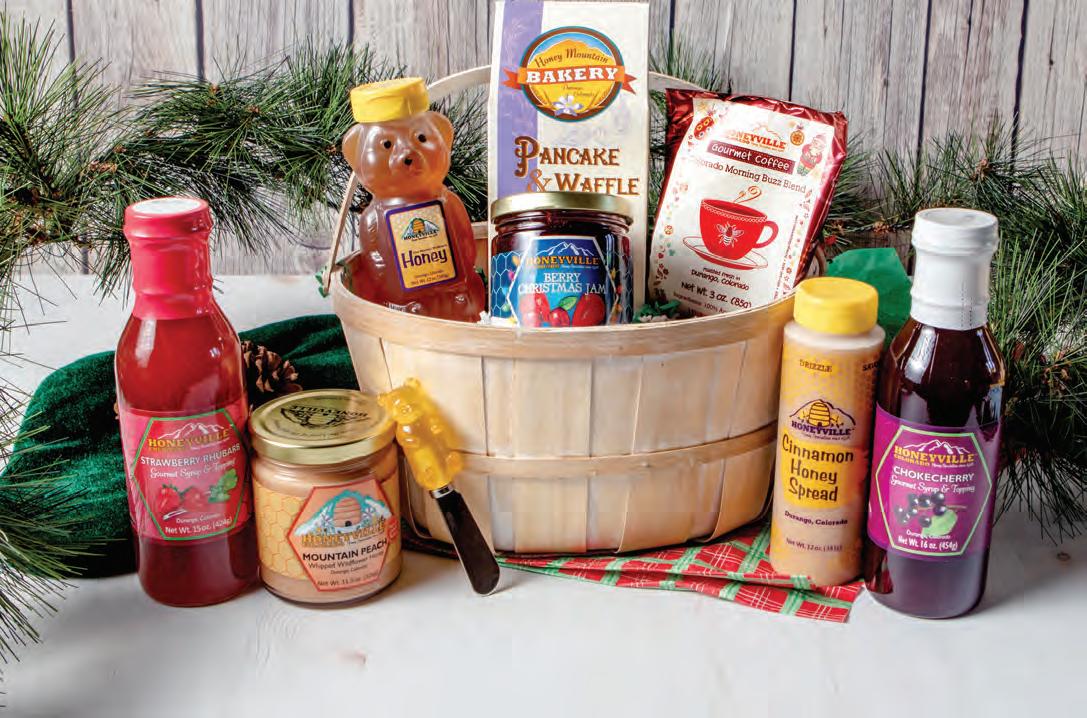































































































Colorado grown. Colorado crafted. Eat and drink local at Snowy Peaks Winery.














Tune in and answer these questions about Colorado on TV. by BEN KITCHEN






SNOWY PEAKS WINERY
292 MORAINE AVE • ESTES PARK













From locally-made cheeses and charcuterie to smallbatch, hand-crafted Colorado wine, we’ve got your Colorado fix in our Estes Park tasting room. Support local. Drink Colorado!

































1 Joel and Ellie visited the abandoned campus of the University of Eastern Colorado in an episode of what critically acclaimed post-apocalyptic series? The school isn’t real, but it is based on Colorado State University?
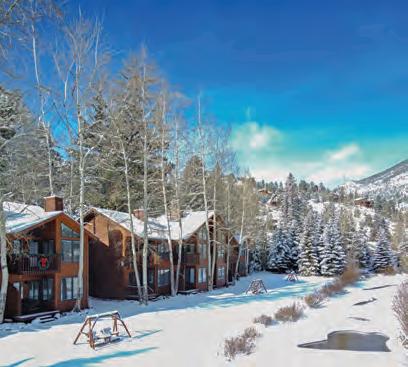
Experience the splendor of the Rockies at Aspen Winds. The secluded setting along Fall River, among the aspen and pines, offers a relaxing atmosphere. Aspen Winds is located minutes from Estes Park and Rocky Mountain National Park. We offer one and two bedroom suites and in-room spa suites.
Kitchen/Kitchenettes • Gas Fireplaces Fire Pit • Free WiFi • Cable/Blue-ray DVD No Pets • Non-smoking 970-586-6010 • 1-800-399-6010 1051 Fall River Court • Estes Park AspenWinds.com
2 Much like the contemporary soap opera Dallas, the Carrington family at the center of ynasty got their wealth from what industry?


3 What Blue Collar Comedy Tour stand-up starred in a namesake TBS sitcom that was set in Louisville? If you’re looking for a hint as to who it is, here’s your sign!
4
In 2022, former The Real World: Denver star Colie Edison was named the Chief Growth Officer of what sports league? Despite a push in August, it was announced in October of this year that the league has no plans on expanding into Colorado anytime soon.
5 The Top Chef season 15 episode “Red Rum and Then Some,” which aired in 2018 and featured then-Gov. John Hickenlooper, asked chefs to make nightmarish dishes at what iconic locale?

6
Two of the following are Western TV shows set in Colorado. Which is the odd one out, instead being a reality show about a gun store in Englewood??
a. Lock ‘N Load
b. Pistols ‘n’ Petticoats
c. Shotgun Slade
7
What true crime TV series is all about detective Joe Kenda recounting some of the hundreds of cases he solved while working with the Colorado Springs Police Department? The show ran for nine seasons on Investigation Discovery.
a. Death Decoder
b. Homicide Hunter
c. Murder Maestro
8
Everwood, which is set in the titular fictional Colorado town, was the first TV show featuring what actor in a recurring role? He’s since gone on to appear in the Marvel Cinematic Universe, much like his Everwood co-star Emily VanCamp.
a. Chris Evans
b. Chris Hemsworth
c. Chris Pratt
9
What’s the name of the fictional town where the show Community is set? Its name is somewhat similar to that of a city in Arapahoe County.
a. Anglewood
b. Greendale
c. Sheritown
10
A heavily fictionalized version of Matheson serves as the setting for what TV show, which was based on a film starring Rick Moranis? Moranis didn’t reprise his role, instead being replaced by Peter Scolari.?
a. Honey, I Shrunk the Kids: The TV Show
b. Parenthood
c. The Real Ghostbusters
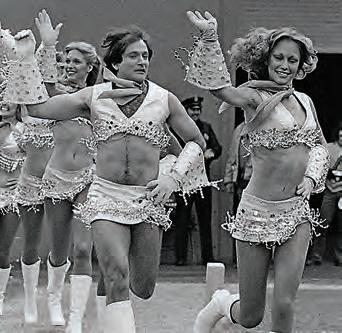
11
To film a scene for an episode of Mork & Mindy, Robin Williams danced as a cheerleader in a Broncos game in 1979, technically making him the first male cheerleader in NFL history.
12
On the show Last Man Standing, the character of Vanessa (wife of actor Tim Allen’s character) is portrayed by Jane Hajduk, Tim Allen’s real-life spouse.
13
The penultimate episode of the Denver-set Disney Channel series Good Luck Charlie featured a lesbian couple, making it the first representation of a same-sex relationship on the network.
14
As a reference to the Peterson Space Force Base, the Netflix sitcom Space Force is set in Colorado Springs.
15
South Park is one of only two animated TV series to be nominated for the Emmy for Outstanding Comedy Series. The other is The Flintstones
No peeking, answers on page 58.


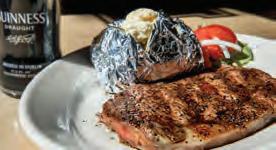


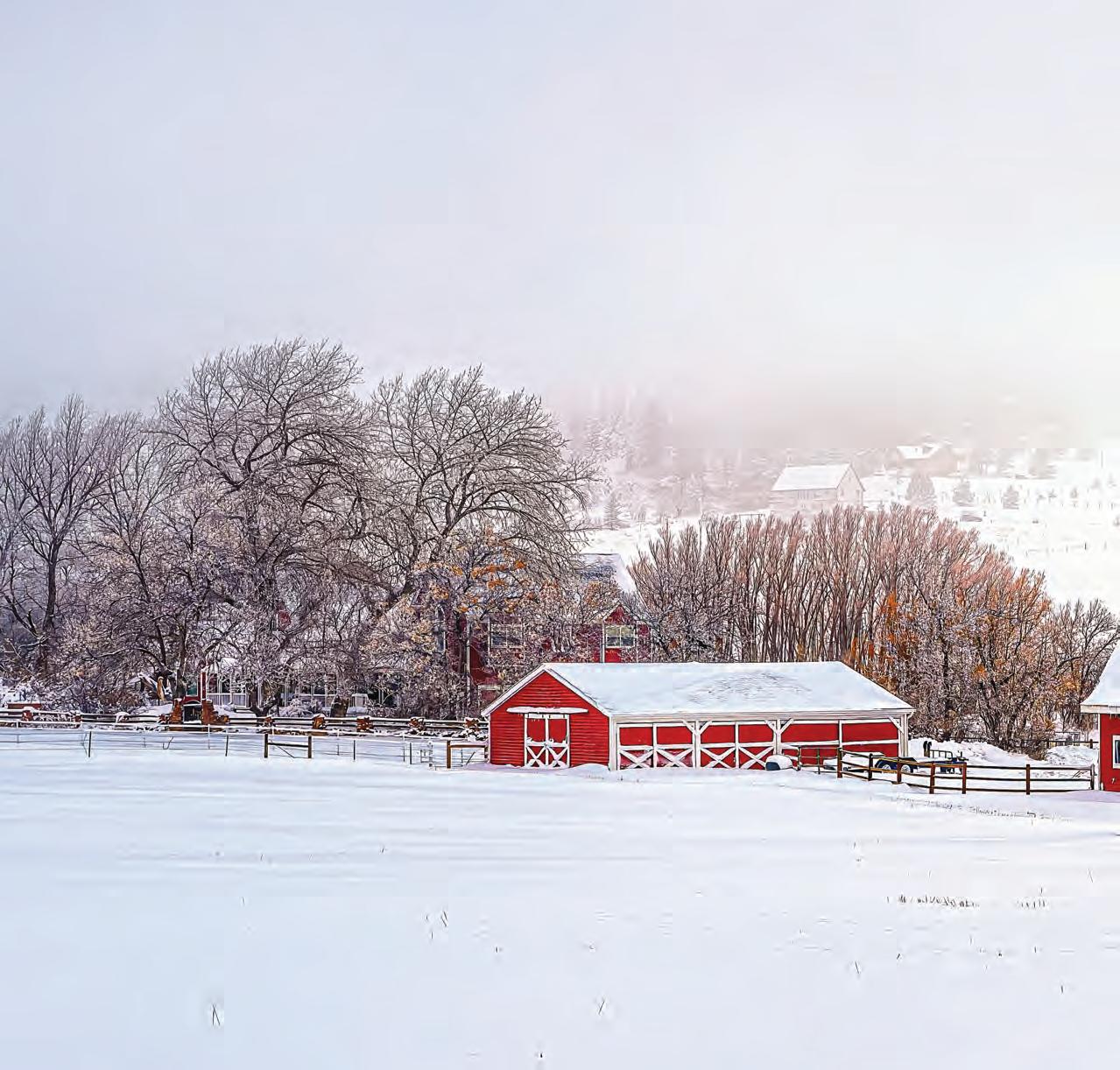
Photographers capture the timeless nostalgia of Colorado’s barns.
by TOM HESS
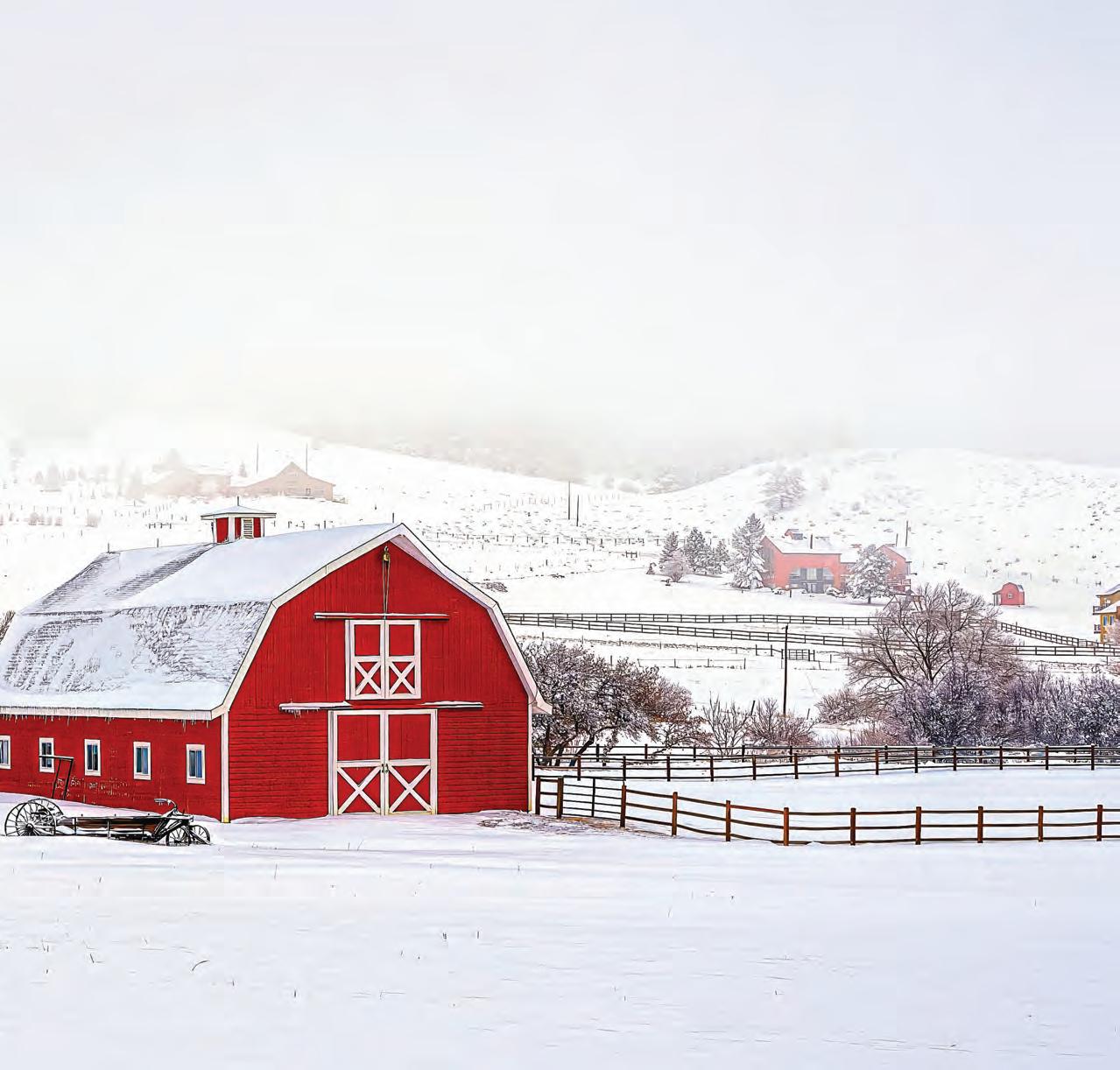
from the fenceline.
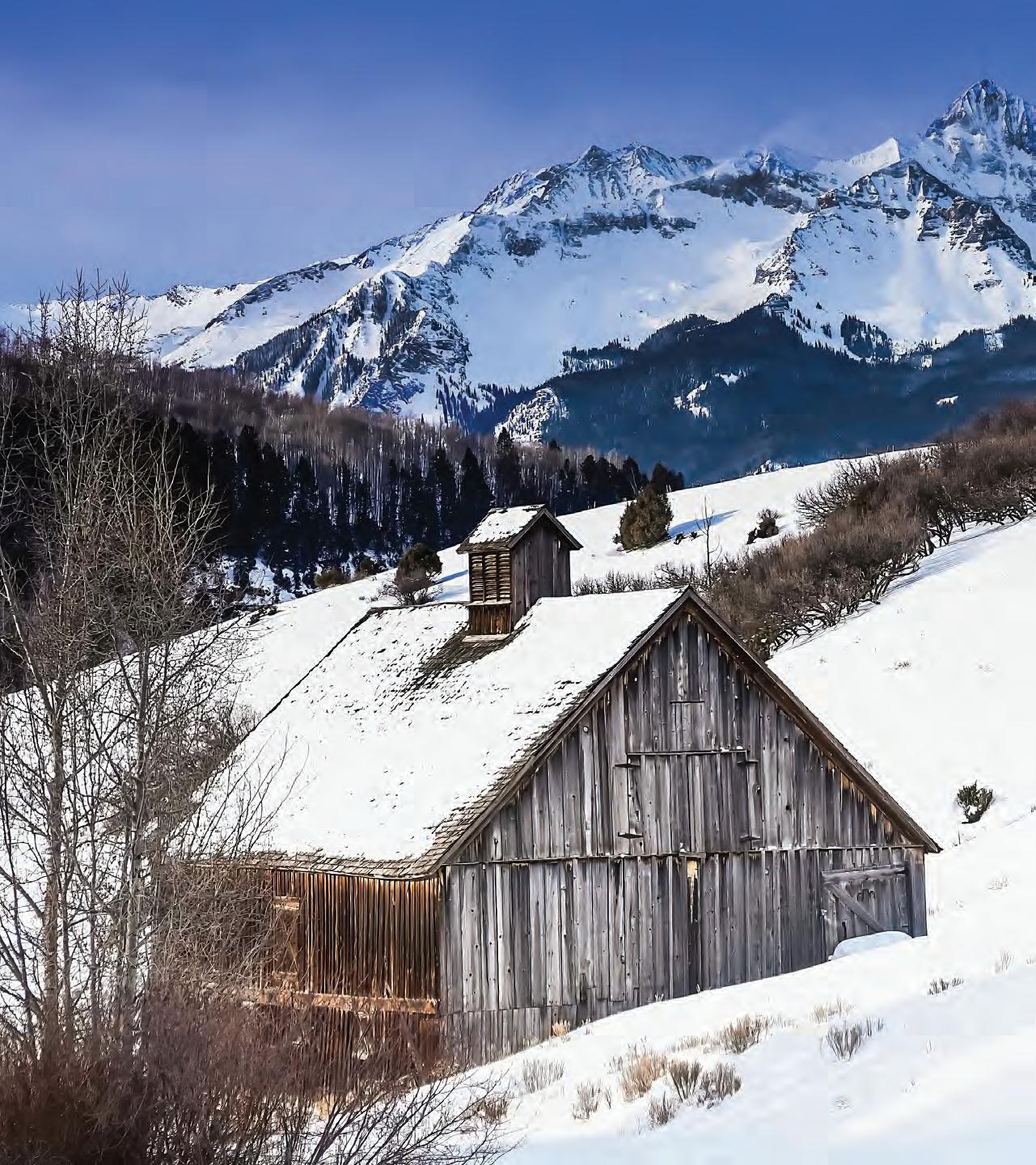
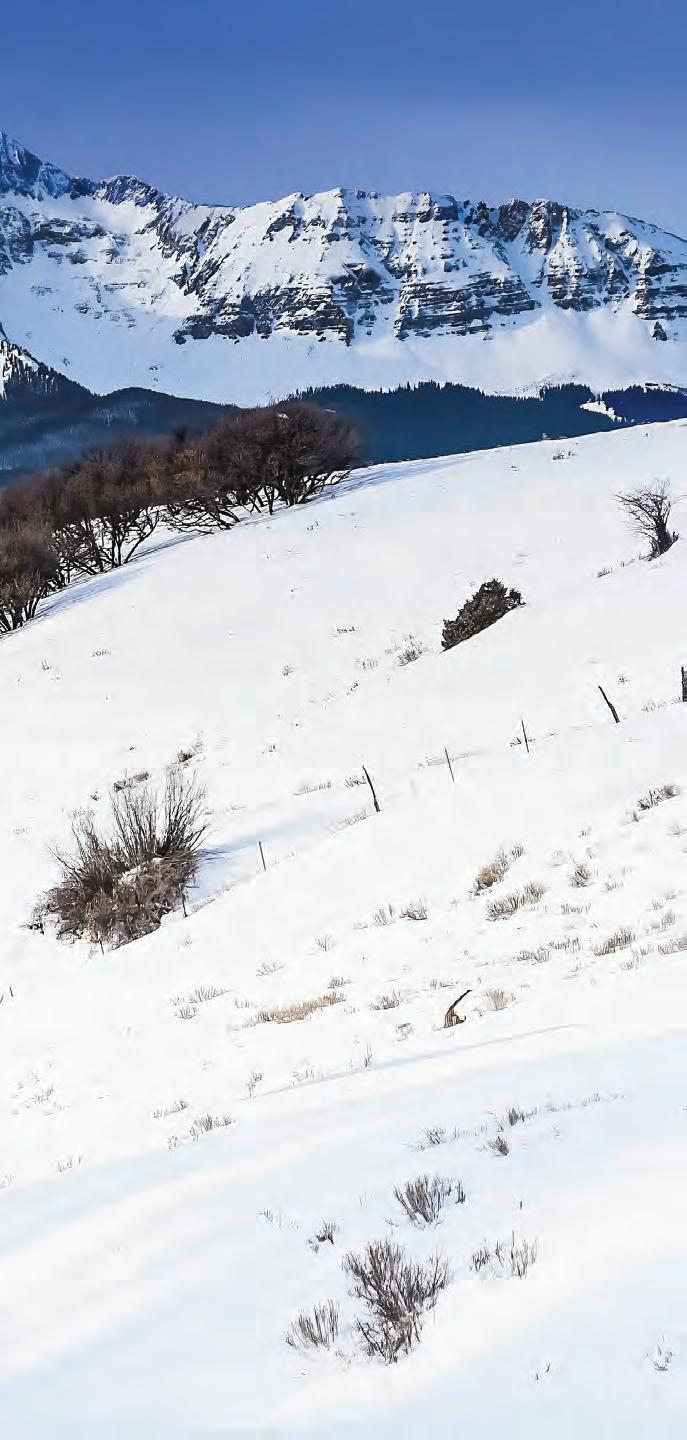

DON PAGE – his parents named him Don, not Donald – began photography 45 years ago back in Illinois, first with a Kodak Instamatic, then with 35mm film camera in 1978. A self-taught photographer, Page turned his lens toward West Virgina barns around 1990. He switched to digital in 2007, and moved to Salida in 2012.
A self-proclaimed perfectionist, Page wouldn’t give up photographing the Rafter 26 Ranch barn near Buena Vista, along Colorado Road 339.
In February 2017, on a cold morning, Page knew that he had the shot he wanted, one that wouldn’t get any better. “My ambition makes me work harder, working for the perfect time where everything works,” Page said. “A good photograph is like fine art. You’ll never repeat that image again, and its impact – that image will have its own little way of lasting a long time.”
There’s a reason Page isn’t the only Colorado photographer who makes a point of creating the perfect barn photo, he said. “Barns stands outthe size of them, usually in bright colors. They just seem to be part of a heritage we’ve had in the agrarian years.”
Page worked for years in the Illinois Department of Transportation’s research and department laboratory. He learned a lot on the job about new road materials, just as he has continued learning about photography. “I was amazed how much a camera revealed, the things I hadn’t seen. It’s always a surprise, delightful.”
Salida photographer Don Page captured a deer foraging at the Everett Ranch along Chaffee County Road 166. Below, Steamboat Springs photographer Corey Kopischke frequently photographs the historic More barn below Steamboat Ski Resort – lit here for lovers on Valentine’s Day.
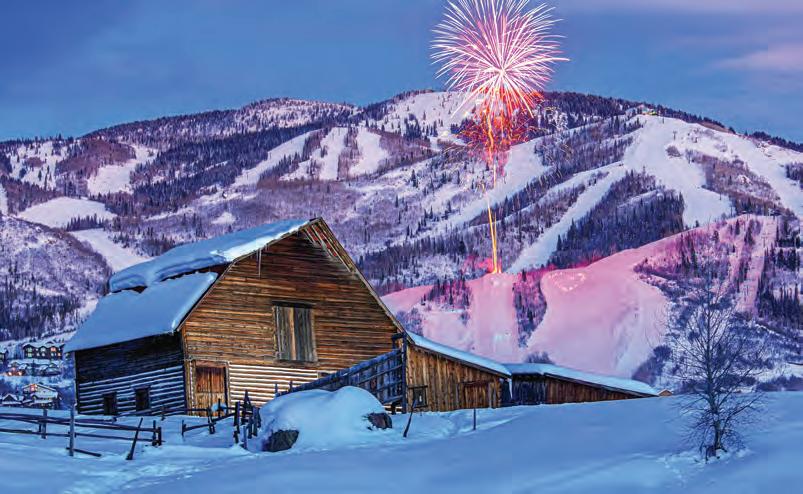
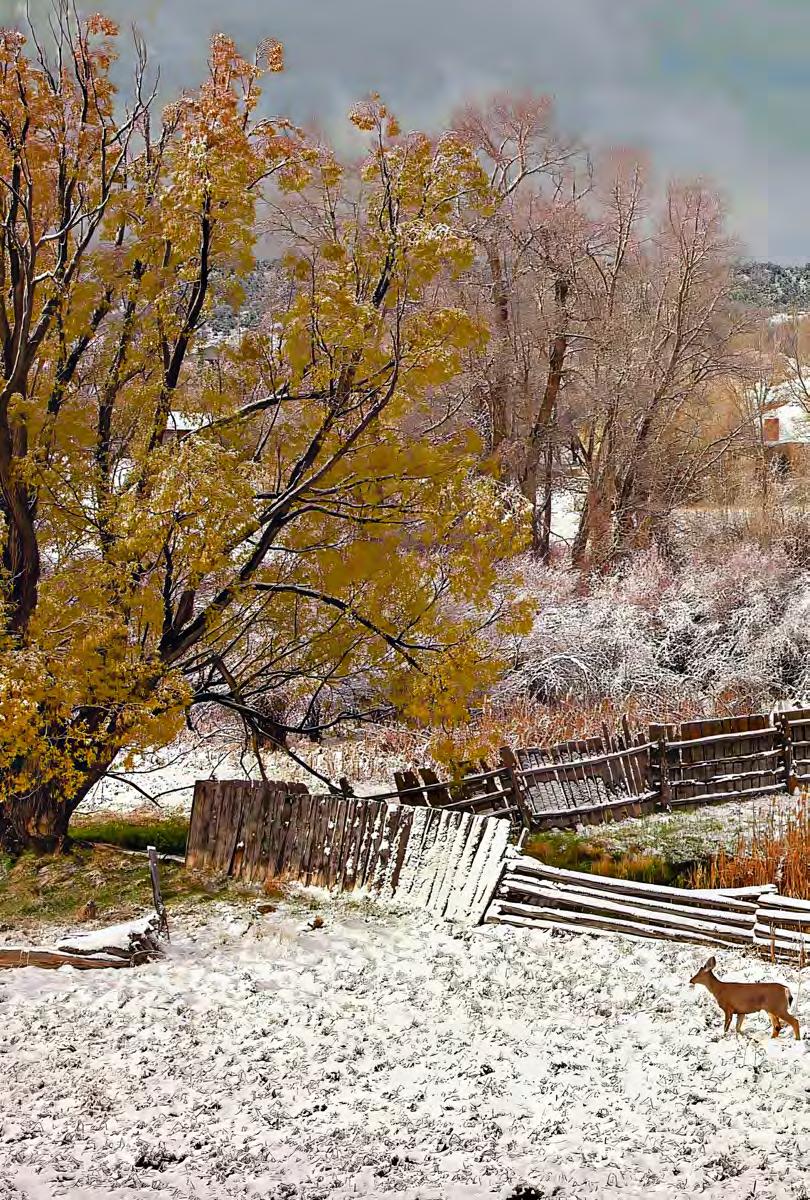
Andrew Carafelli is a Denver lawyer and avid hiker. He’s hiked every Colorado 14er once, and half of them again with his son, Clint. Clint is halfway through hiking half of Colorado’s 600-plus 13ers. Andrew, 65, isn’t joining him on those hikes.
Carafelli is also a hobbyist photographer. Like Page of Salida, he’s a perfectionist, with an artistic eye. That eye can’t
give up on the perfect shot of a barn near Telluride, with the Coors mountain, Wilson Peak, in the background.
“You have two different icons coming together, a famous barn and the Wilson Peak, the summit with a point on it, the barn with a point on it,” Carafelli said. “They go together so well. My father was a fine artist. He always loved painting

old barns, so I got from him a love of old barns and old buildings. They have a sense of history, stories they could tell.”
Steve Hixon of Colorado Springs receives inspiration for barn photography from his wife, Darlene. “She wanted me to get a red barn in the snow a couple of years ago,” a barn near Palmer Lake off Colorado Highway 105, Hixon said.
“Barnes are pastoral, idyllic, simple, not cluttered, and in winter, the colors are so stark,” Hixon said. He leads photography classes. “I tell people to simplify their photos.”
A former pastor, Hixon doesn’t always hike deep into the mountains for his photographs. For the red barn photo, he drove a front-wheel drive Mazda CX-5,
which got him to the fence line of a ranch property. That’s all he needed – that, and good weather: just enough snow, but not too much.
Hixon began photographing after experiencing an epiphany at a New Year’s Eve dinner in 2002.
“I don’t know why I said it, but I said I think I will try to show and sell some of
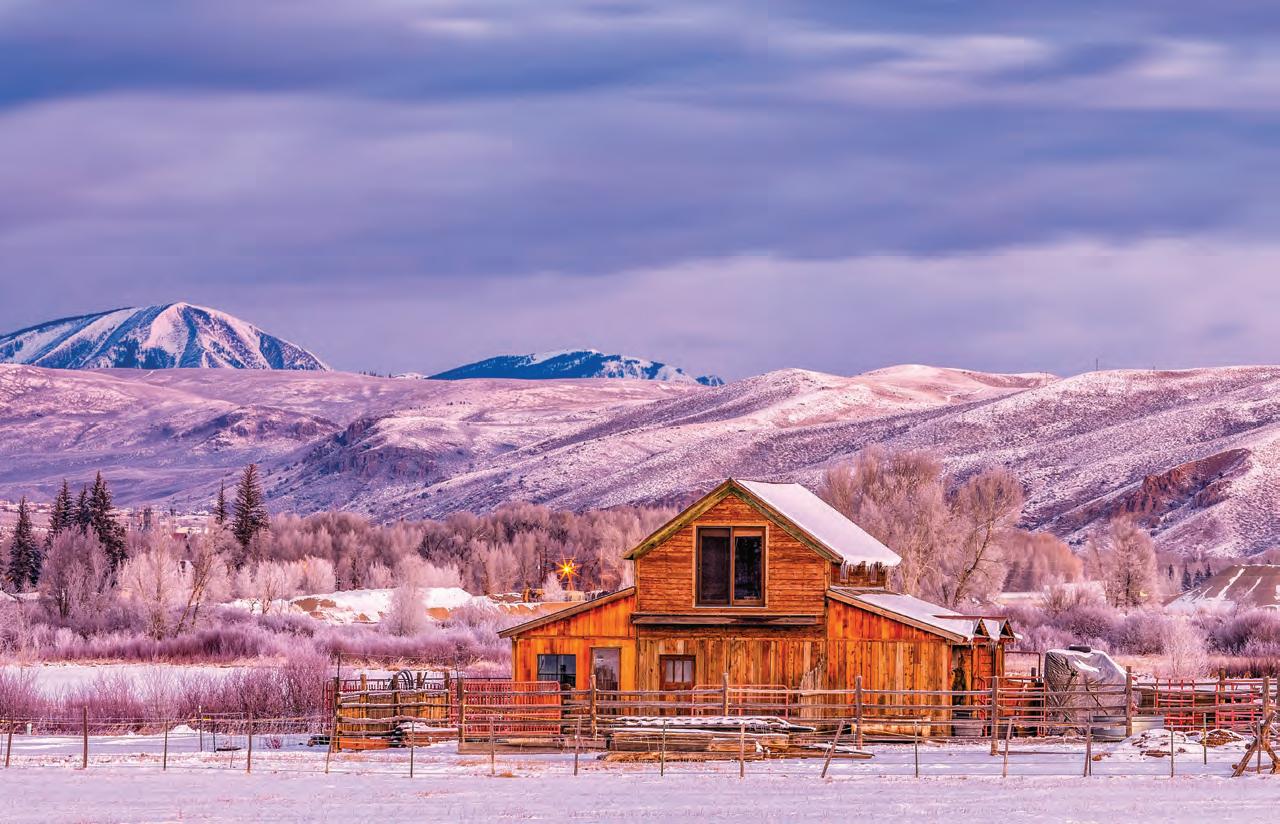
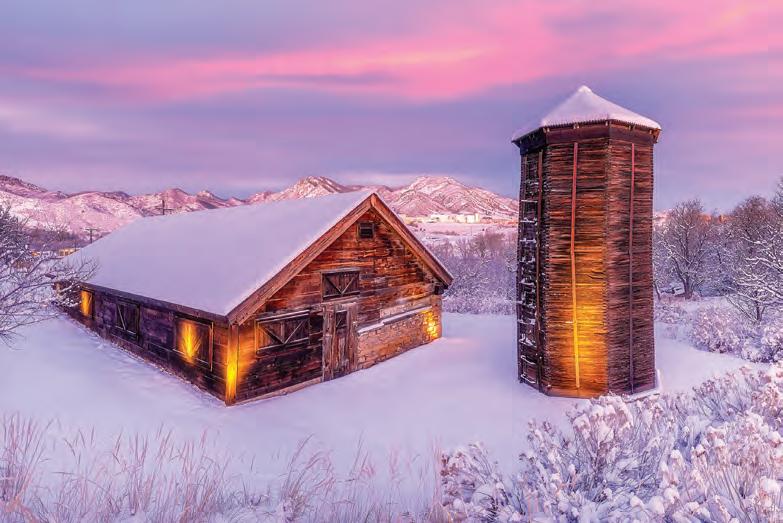

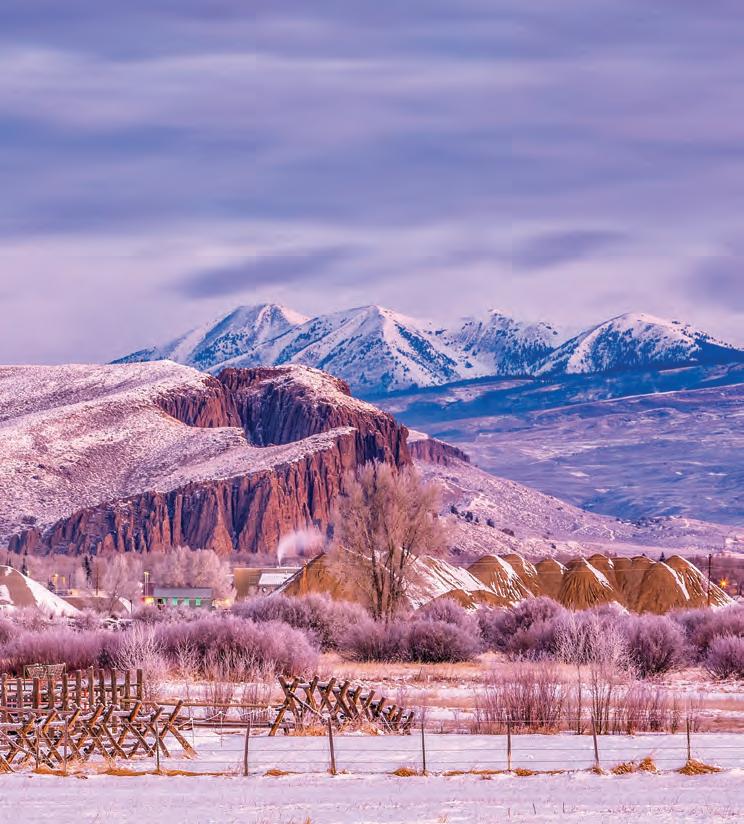
my photos,” Hixon said. “That launched me into this journey of how to get good pictures. I think I had a good eye, and I developed an obsession for learning photography.”
What he and Darlene describe as his “accidental retirement” is now a pastime of photography for calendars and displays of his photos on the walls of Pikes Perk, a coffee shop in Colorado Springs.
Allan Ivy is a lifelong photographer from South Africa who toured American ranches in 1985 and moved to the Gunnison area, where he opened a gallery that COVID closed.
Ivy’s favorite barn shot is Therese Ritz’s horse barn along Tomichi Creek, taken in 2015. “I go past it every day, admire it, as I go into town on County Road 38. I photograph it from the road.”
Winter light is best in Gunnison, Ivy said, “because it’s so cold, you’ve got hoarfrost. It’s sparkling in the sky, and when you’re lucky, it gives you early morning glow.”
Barn photographers can’t help but glow with delight when they look through their lenses and see their winter wonderland.



Meet the people and other creatures who can navigate your way through construction at Denver International Airport.
by TOM HESS
DENVER INTERNATIONAL AIRPORT is an economic engine in Colorado, generating $36 billion in economic impact. It’s the third busiest airport in the world, receiving 69 million passengers in 2022, and expected to almost double that in 20 years. It also generates more controversy than any other Colorado institution.
One focal point of public debate over DIA is “Mustang,” the 32-foot-high sculpture of a blue horse with red eyes that Coloradans lovingly call Blucifer. Since its installation in 2008 by Luis Jiménez, DIA’s mighty steed has won more admirers than detractors, judging from the number of t-shirts available with the horse’s fierce eyes acting as lasers.
Joseph and Heather O’Malley returned recently to DIA from Disney World with their two children, riding a parking shuttle bus to their car for a long ride home to Glenwood Springs. When told that its real name is Mustang, they shook their heads. For them, Blucifer is preferred. A Boulder commercial lawyer sitting across the way said she believes every conspiracy theory of DIA there is – Illuminati, lizard people, a secret underground tunnel – not because they’re factual, but because they’re fun.
Inside DIA, which airport staff call DEN – the airport’s code, and the abbreviation used in travel booking engines – the staff know what the public thinks and for the most part leans in and plays along. But most of all, they help.
Let’s meet a few of them.

DIA staff believe art can be therapeutic. The therapy begins outside, with the peaked roof, resembling both the Rocky Mountains and Native American tipis.
Stephanie Cox
Joy Martinez
DIA’s call center surprises most people, either because they didn’t know the airport had one, or that its staff would have a sense of humor about the controversies that encircle the airport and its staff.
Joy Martinez is the call center’s senior manager, and she laughs at her reputation among conspiracists.
“Everybody believes I’m in the dungeon, or in the tunnels” beneath DIA, Martinez said. “We’re the lizard people, hiding down here.”
She and the call center team – five fulltime agents, three part-time agents and two supervisors – work at the base of the Airport Office Building.
In addition to calls about lizard people and the Illuminati, the call center routinely hears from fliers concerned that rain, snow or wind will cancel or delay their flights. It’s the airlines and/or the FAA that make those decisions on whether flights are delayed or canceled. The airport never closes, Martinez’s team advises.
Tough customers, long hours and latenight/early morning calls don’t faze Martinez. She watched her mother work a call center for the phone company for 40 years. Martinez works closely with Ashley Forest, the airport’s public information officer. Forest might make an emergency call at 3 p.m. and pass along the information to Martinez. Between the two, the airport communications channels are covered 24/7.
So how do Martinez and Forest decompress? They talk about taking a trip together involving water, but that’s sometime in the future. For now, Martinez is a roller derby queen. Her derby name: Talk Schmidt.
Martinez said she and her team sometimes get to be heroes. She remembers one case.
“A customer lost their bags, leaving that person and his wife with no clothes, nothing,” she said. “One of my agents, Mirella, took it upon herself to walk up to the airline baggage office. She talks to the baggage agent, and together they located the bag. The customer wrote the next day thanking her. Any little bit of excitement or happiness that you can help a customer, it makes you feel like you’re on top of the world.”



Anyone with a
of

Fred Barta has been an information booth volunteer at DIA since August 2021. Before that, he served as a financial advisor at TIAA, an investment firm with offices in Denver.
Volunteering at DIA “is cheaper than going to a psychologist” he said. “When you retire, you kind of move further out in the solar system of contact with people. This gives me five hours a week of face-toface human contact.” Barta is 65 and lives with his wife in Silverthorne.
Barta mainly listens, and in most cases can solve a traveler’s problem. Solving a flier’s problems means that Barta must know the airport backwards and forward. He’s done that by walking around, observing, and talking with any airport employee he can. “Working at the airport really reminds me of my time in the army – camaraderie, and a spirit to serve.”
“Things change all the time,” Barta said. DIA is rebuilding its Great Hall, a.k.a., Jeppesen Terminal, and lengthening its concourses.

DIA plows surfaces big and small, from 12.2 million square feet of runway to the Westin Hotel plaza (top). Information booth volunteer Fred Barta spends five hours a week answering travelers’ questions about transportation, baggage and security.
“Generally, you’re going to get eight, maybe 10 questions: Where’s the car rental, where’s security, TSA Pre-Check or CLEAR. They need to get to their plane, or they need to get their baggage, or they need an Uber/taxi, or they need a hotel shuttle, or sometimes they need
a USB port, or a bouquet of flowers, or a post office. There are very few unusual questions.
“We’re not concierge, we’re information, and we speak with sometimes 100 people an hour. My role is really to make their trip a little easier, and maybe more enjoyable.”

DIA works with 101 volunteer dog therapy teams, more than any other airport in the world – not just to qualify for the Guinness Book of World Records, but because studies show that dogs reduce passenger stress, bringing smiles to their faces.
Karla Grahn is the volunteer program manager for DIA’s Canine Airport Therapy Squad – CATS for short. At DIA, when you hear someone talking about CATS, it helps to remember that they’re referring to dogs.
The teams include more than 40 breeds – among them, mini-Aussie, goldendoodles, golden retrievers, Labradors, standard poodles, Bernese mountain dogs, Alaskan Klee Kai – and dogs that have been adopted or rescued. Selection for the program is all about personality and training.
Grahn once served as the bird and mammal trainer at the downtown Denver Aquarium, but she’s always favored dogs. She and her husband, Troy, parent two dogs that he used in hunting pheasants and finding antlers: a German shorthaired pointer and large Münsterländer.


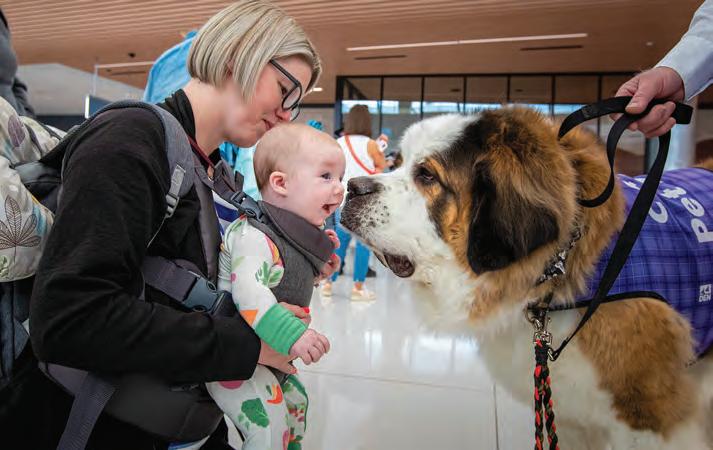
“Dogs are always happy, always excited to see you, they’re always joyful, and they never judge you for anything,” Grahn said. She recalls one case where the dog led the owner to a unique encounter.
“Ron Horn, a volunteer who owns Matilda, a Newfoundland, told us a story,” Grahn said. “He and Matilda were walking around the concourses, Matilda likes Concourse B, and Matilda decided she needed to go visit this person. As soon as this lady saw Matilda, her eyes lit up, and she got on the floor, and she just
enveloped Matilda in a hug, and she just broke out into tears. It blows my mind how many times dogs know when a person needs them.”
Dog owners must make a minimum commitment of five two-hour visits every three months. The owners can pick their own shift time and day for their volunteer visit. Their parking is free. Passengers who want to know when dog therapy teams will appear at which concourse and when can look them up on X (formerly Twitter) using the hashtag #DENCATS.

Sydney Bianchi is one of the airport’s 101 dog owner volunteers, and her miniature Australian shepherd Tango, age 5, started spotting people in DIA who needed help in June 2022.
“We come here typically once a week for the fun and laughter, but also to be of comfort to people who for whatever reason, might be struggling and Tango seems to have an innate ability to sense those emotions,” Sydney said.
Tango tends to seek out people who appear to be anxious or sad and will often stay with one person for as long as it takes until she feels they’re OK and only then does she move on.
Tango first belonged to Sydney’s sister, who died from cancer five years ago when Tango was just 2 months old. Once Tango’s calm and sweet temperament began evolving, Sydney made the decision to train her as a therapy dog to “give back” and offer support to others going through similar hurdles in their lives.
Most passengers don’t know about the airport’s call center, nor its dog therapy program, and most don’t know that Catholic mass is available on Sundays in a chapel in Jeppesen Terminal.
“An airport is about as liminal a space as you can possibly have,” said Father Jason Wunsch. “A lot of people – when they imagine hell, it would be like an airport. There’s no home; you’re just passing through.”



Sunday Mass is a welcome home to traveling Catholics and others who seek its solace. The service is 35 minutes long and begins at 1 p.m. An announcement is made over the airport’s PA system 30 minutes before its start.
Next door is am Islamic Masjid. Both the Chapel and Islamic Prayer Hall are open daily, 5 a.m.-10 p.m.
Wunsch works out of a hotel office in the business park off Tower Boulevard, a short distance from DIA, and lives in downtown Denver with other priests. He visits the airport for special occasions, such as a police officer’s retirement party.

DIA staff believe art can be as therapeutic for stressed passengers as therapy dogs. That’s why Samantha “Sam” Weston looks for the best placement for public artwork in the airport.
“We look at the stress points,” Weston said.
Weston manages DIA’s “legacy” art – 34 installations, many of them familiar works dating back to when the airport opened in 1995. Weston was a toddler in Texas at the time, and now helps preserve that legacy, one that passengers have come to rely on.
Passengers seem to be most attached to “Mustang,” the blue horse with red eyes, rising on its hind legs as it greets motorists making the sweeping turn into the departure and arrival gates.
The mustang’s fiberglass has been exposed to more than 300 days of sunshine a year since 2008.
“The mustang is in a harsh environment,” Weston said. “We repair hail dents, fix any discoloration, patch and repair cracks, add clear coat. To my knowledge we’ve only replaced the red eyes once.”
Art is just as important to airport staff as to passengers. Weston hosted Aviation Learning Day in 2023 for 40 children of staff. They created pinwheels, inspired by the Kinetic Air Light Curtain – the spinning pinwheels lining the train tunnel that carries passengers to concourse A, B and C. Several children gave Weston handmade cards and drawings to thank her.
“One employee, his nephew participated, he sent me the sweetest email about how his nephew went home that day and created a hundred more pinwheels.”

RT IS PLAYING a larger role in the experience of fliers traveling through major American airports.
Denver International Airport hosts 34 permanent art installations. Only one other airport has more: San Francisco, with more than 100. Hartsfield-Jackson Atlanta International Airport hosts 20, Chicago’s O’Hare has 16. And media observers are paying attention. CNN and USA Today rate DIA first in art; The Smithsonian lists DIA among the top 10.
Among the works above ground inside DIA that get attention:
“Notre Denver” by Terry Allen: Two cast bronze gargoyles squatting inside empty suitcases, overlooking the east and west baggage claim areas.
Below ground:
“Deep Time / Deep Space: A Subterranean Journey” by Leni Schwendinger: A milelong light and sculpture installation sited in the inbound train tunnel, transformed with images drawn from a mineshaft, a cave and deep space.
Outside DIA:
“Luminous Wind” by Laura Haddad & Thomas Drugan: Located along Peña Boulevard, 952 acrylic rods reflect and refract sunlight during the day and display programmable color at night.
“Mustang”: The 32-foot cast-fiberglass sculpture with red eyes by the late Luis Jiménez references the bright colors Jiménez experienced as a youth in his father’s sign-making company.


At top, “Mustang,” is an iconic mascot for DIA. “Notre Denver,” a gargoyle, sits above baggage claim. The airport train travels through a light show created by artist Leni Schwendinger.
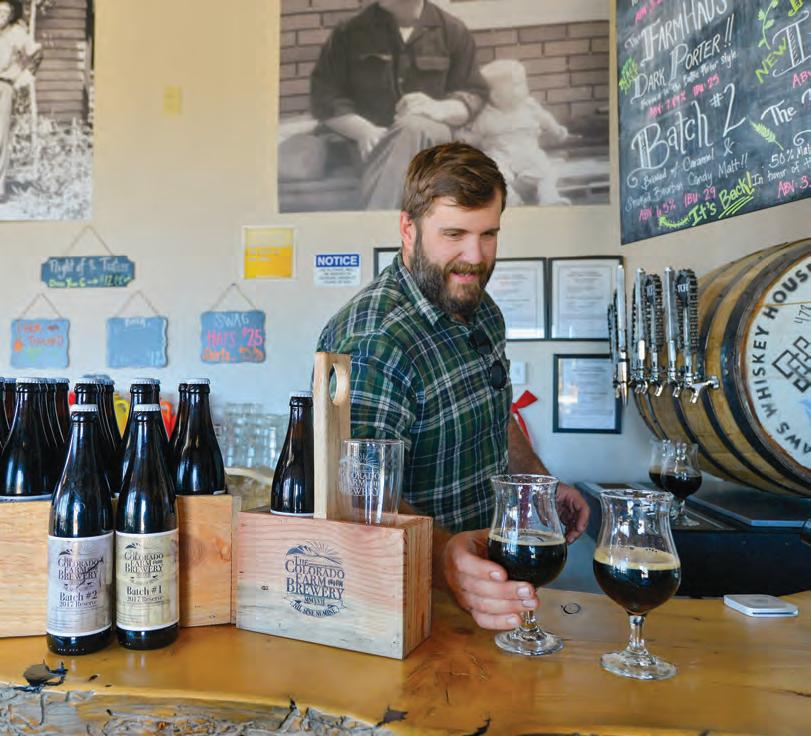
Fearless farm kids grew up to embrace innovation on their great grandfather’s San Luis Valley land
by TOM HESS
Growing up on a San Luis Valley farm near Alamosa, Jason and Joshua Cody remember figuring out as little kids how to operate adult-size tractors and trucks with their short arms and legs. Jason was 9 and Josh 7 when they drove an old Dodge truck – Jason at the wheel and Joshua on the floor pushing the pedals – to transport hay bales for their parents’ dairy operation.
Now in their early 40s, and over six feet high, each of them married with children, the Cody boys remain fearless, willing to try anything, do anything to make the family farm go, to live another day on the land first settled by their great grandfather. Jason and Josh teamed up with their neighboring friends and farmers Keith and Suzanne Tolsma and took a big risk in 2017 in brewing “estate” beer – beer that is brewed with ingredients sourced entirely on the farm: malted barley, wild yeast, wheat, rye, hops and water.
Their farm-grown business, The Colorado Farm Brewery, is drawing travelers off U.S. 285 and west five miles on 2020 County Road 12 South. The diversion rewards the adventurous when the taproom comes into view, farm fresh beer flowing from its tap – the only farm-totap brewery in the state.

Joshua Cody (below and left) grew up with his brother Jason on their great-grandfather’s barley farm in the San Luis Valley, and took the family in a new direction: a brewery.


The fourth-generation Cody farm boys grow barley, rye, hops and wheat on the Alamosa County farm and draw water from the well their great-grandfather dug in 1936 – all the ingredients they need to brew their beer, right there on the farm. Jason and Josh are grateful because they almost didn’t get the chance to inherit the farm.
First, low milk prices forced the family to shut down its dairy operation in 1995, which had helped them survive for 30 years. Then trouble came to barley, their cash crop.
The family’s barley crops went into someone else’s beer for 50 years. Coors Brewing Company began paying pennies on the dollar for that barley.
SOME IN THE Cody family talked about quitting the land, giving up agriculture, the only thing they’d ever known. Phyllis Cody, Jason and Joshua’s late grandmother, disagreed. She wouldn’t sign the papers to sell the farm. The family chose instead to add value to their agriculture, anticipating consumer trends and leading the way for other farms to someday follow.
Jason, Joshua and their dad, Wayne, talked over coffee in the winter of 2007 and decided on a farm-rescuing idea: sell malted grains to Colorado’s growing number of craft breweries and distilleries. The Codys formed Colorado Malting Company in January 2008. Malting remains the Codys’ main source of income.
Farm families rarely throw anything away, for good reason. What seems useless in the moment might be useful in the future. Sure enough, the Codys pulled old equipment from their dairy days and repurposed it for malting.
The Codys converted the old dairy’s milk tank into a tank for malting grain. All the Codys’ malting equipment is driven by repurposed irrigation drives and gearboxes.
Next, Jason and Joshua had to build a customer base for their malt. Jason recalls driving a pickup loaded with bags of malt to breweries throughout Colorado, offering the bags for free for brewers to experiment making beer with the new malt. The brothers put in a lot of miles, but it worked. By 2015, the malt company had 174 breweries on a waiting list for its San Luis Valley malt.
Cody malt impressed the market, and so did Cody service.
A customer in Lyons, Spirit Hound Distillers, called at 5 p.m. one day to say it had received a shipment from the Codys and it was one bag short of peated malt. The shipping company had spilled a pallet. One bag tore, and they threw it away. The distiller asked for another bag, so Jason drove to Lyons, 288 miles one way, left the bag on the distiller’s doorstep at 2 a.m., turned around and drove home in the dark.
The Cody boys’ reputation helped them take the next step in opening the brewery, but nothing about the brewery and taproom has been easy. There’s nothing else like The Colorado Farm Brewery in Colorado, so state regulators didn’t understand it and still don’t.
To get its brewery going, the Cody family needed 50 gallons a minute from the family well. The state’s local water office eventually ruled that they had to dry up 35 acres to do it, and account for every drop of water, but that arrangement is provisional. The case is in water court.
The brewery also needed hops grown and yeast cultivated on the property. They built trellises for the hops and selected varieties that San Luis Valley’s soil, sunshine and low humidity would nourish. Yeast was perhaps the most challenging to cultivate on site. Jason learned of a valley





in Belgium that cultivated yeast from the air. The Belgium valley is like the San Luis Valley. From that idea, Jason developed the wild yeast that the brewery uses today.
Joshua’s trips overseas shaped the new family business in other ways. He learned that beer brewing in Germany is precise and efficient and mechanical; brewing in Scandinavia is ancient and rustic and earthy. The Colorado Farm Brewery blends both.
On a trip to Finland, Joshua learned that juniper berries could substitute for hops and that alder wood smoked beer in Norway made with used yeasty bread might be a taste that Americans would enjoy.
A BEER COMPANY in Norway listed its entire recipe on the label, the kind of transparency that the Cody family wants The Colorado Farm Brewery to practice. Cans and bottles of The Colorado Farm Brewery beer list the brewery’s recipe in
language only a brewer could love: every Cody farm ingredient (Pils and Abbot malt, Cascade and Nugget hops and Spontaine yeast – the Codys’ proprietary strain), every step of the brewing process (from mash to “trubwürzpumpen” – a German term for allowing particulates to rise – to sparge) and every phase of fermentation (hundreds of hours of primary, secondary and lagering).
Joshua and Jason aren’t the boys operating the Dodge truck anymore, but Joshua is still pushing the pedal. He’s the scientist and chemist of the family, technical in his talk, propelling the company into the future. The steering wheel is still in Jason’s hands. He’s the one earning the trust of customers by driving all over Colorado, building relationships. Jason will tell you that he doesn’t act alone; the business is a group effort. Jason, Joshua, their dad Wayne, the Tolsma neighbors – Keith and Suzanne – and silent part-
ners own the brewery. Jason, Joshua, father Wayne and uncle Tim Cody own the malting company. Wayne and his wife Sandy own the farm.
Sometimes neither Joshua nor Jason know where the other one is any given hour, but when they’re together, they know who to thank for all they have.
Jason and Joshua paid tribute to Grandmother Phyllis by putting a grainy 1939 photo of her, at age 16, on the first cans and bottles of The Colorado Farm Brewery beer, Batch #1 2017 Reserve. “She had recently passed, and I was going through old photos of her, and it inspired me to connect people to the farm,” Joshua said. “What is a family farm? It’s the history of the people who built it. I was inspired to give her the honor she’s due. It was her decision to keep us here.”
Also on the label is the Colorado state motto, a Latin phrase: Nil Sine Numine,
“Nothing without Providence.” The family puts its ultimate faith not in its hard work, its smarts or the weather, but in their God. Phyllis had led Bible studies and welcomed anyone who showed up at her back door.
The smells of the farm have changed since Jason and Joshua were kids. When they helped with the dairy, the smells were familiar. Only when a class of Alamosa third graders visited and complained about the smell did the boys recognize that they had lost any sense of how a cowbased operation smelled.
Now that malt has replaced cows on the farm, the boys want to smell the scent that fresh, clean malt gives: the smell of cucumber. “That’s the smell of money today,” Jason said.
The Cody family is already looking 10 years into the future. Joshua points out that New Mexico allows breweries to offer distilled spirits as well, but Colorado
doesn’t. Joshua hopes that a Colorado legislator will one day step up and author a bill that will help farms like the Cody farm add value to its agriculture – a bill that would eliminate antiquated, innovation-punishing regulations. If that day comes, Joshua will add single-malt whiskey, using the farm’s malted rye, barley and wheat, to the taproom.
Maybe that will take so long, they won’t be around anymore, Joshua said with just a little frustration.
Just ask Joshua for a tour of the taproom and you’ll see symbols of Cody tenacity. Joshua points out the collar that a mule once wore to plow the land before the family had tractors, and the bar furniture that’s built from a long-standing farm tree. A strong wind blew down the tree, but the winds of change haven’t swept the Codys off their land – not yet. Stubborn as mules, they intend to stay.



OUR STATE THROUGH THE WORDS OF OUR POETS
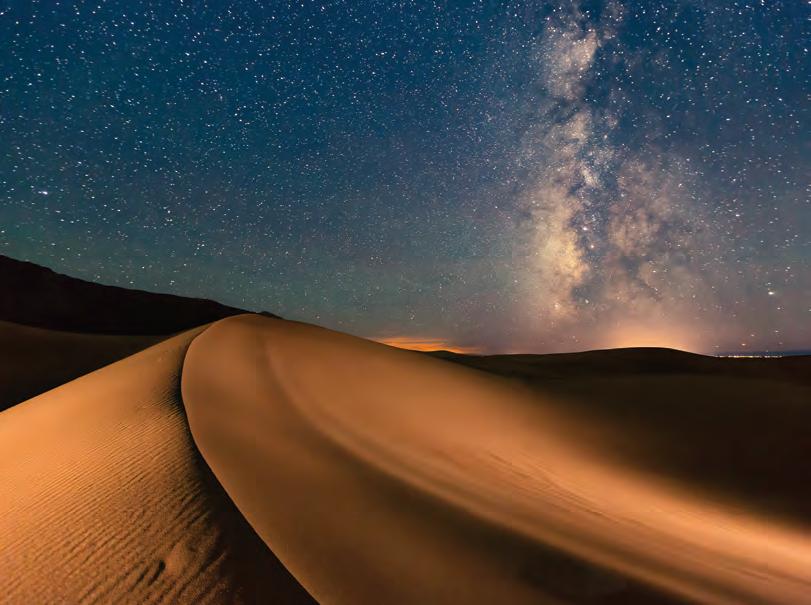
The blue spruce might be Colorado’s state tree, but during the fall, the aspen reigns supreme in the hearts of Coloradans. In this issue, we bring you poems – including a record four haikus – celebrating aspen trees, as well as the similarly named town.
Cher L. Tom, Palisade
Sand dunes sparkle under a Bethlehem night
Like velvet touching earth and sky alike. Then, twists of sagebrush skitter with the wind Before sighing to a stop at the mountain’s edge.
Aspen Gold sleeps beneath a blanket of snow Broken by the soft crunch of a doe’s hooves Weighted down with the unborn fawn inside.
And, miles below the colored landscape of city lights Rushes into the morning sun... the day is here
Bubbling with coffee smells and a hint of breakfast. All here – only in Colorado.
Merlla Malone, Forest Park, Illinois
Long ago to Aspen I went to ski downhill I had meant –Only yellow leaves, faded grass were found in the mountain pass. So, that November autumn missed my chance, never brought ‘em.
Skiers, tourists and poet came here, lived life and show it –The deep white peaks powder steep while memories here aren’t cheap for photos and a thrilling shout, the Maroon Bells still stand out.
Debi Strick, Loveland
Colorado, you’re my home From Pikes Peak To combines on the plains Rocky Mountain splendor A gold capitol dome Oh, Colorado, you’re my home
Charles Ray, Evergreen
mother bear and cub sitting in a small rock pond lick each other’s faces
eight wild turkeys scrambling over the ridge into the tall pines
on a rocky ledge gracefully steps the cougar distant blue-sky peaks
cool autumn night elk bugle coyotes now howl an owl hoot echoes
Rick Flores, Fountain
Colorado’s calling me, where the ponderosa grows, Where the white peaks kiss the heavens And the Arkansas River flows, That old Arkansas River flows.
I’ve walked the coast of Oregon and down to old Tennessee, I’ve rambled with old Bill McCarty and traveled with Bobby Magee.
I’ve trekked the Great Lakes in winter and traded in old Santa Fe, I’ve basked in the Florida sunshine and waded ‘long Galveston Bay.
I’ve danced with the wolves in Montana and crossed that broad Texas plain, And in my mind I kept thinkin’ ‘bout that cool Colorado rain.
Those far-calling places did beckon, but I had a yearning inside, To be where the plains meet the Rockies, to the great Continental Divide.
Colorado’s calling me, where the ponderosa grows, Where the white peaks kiss the heavens, And the Arkansas River flows, That old Arkansas River flows.
J. Craig Hill, Grand Junction
Only in Colorado can I Surf down a sand dune
Have lunch with a herd of big horn sheep
Find a peregrine falcon perched on my deck rail Climb one of fifty-eight 14er peaks
Moab and Taos and Bend have their charms; Life is bucolic on New England farms; There’s beauty and wonder from Key West to Nome But only in Colorado do I feel that I’m home
Lorem ipsum dolor sit amet, consectetur adipiscing
sed do eiusmod tempor incididunt ut labore 15 words.
Thomas Tiffany, Denver
Lulled was I by the babbling brook, As I cast upon it my favorite hook. Not picture perfect but I thought it cool, As the fly landed softly in a deep, quiet pool.
Then a flash of color broke the serene, As a fight for freedom became the new scene. The fly left the surface in the mouth of a trout, Which dove and struggled to get the hook out.
Then into the air this finned beauty broke, Bringing elation to this awestruck bloke. Minutes passed as the inevitable was met, And my adversary lay nestled down in my net.
The hook I removed with a tender touch, For over the years, I have learned so much. That freedom is precious to anything living, And life is perpetuated just in the giving.
So into the water I placed my new prize, With gentle maneuvers, I worked at its sides. A jerk, a wag, and it darted away, To please another on some future day.
DO YOU WRITE POEMS about Colorado? The next poetry theme is “Spring Storms” for March/ April 2024, due Feb. 1 and the theme is “Mountain Tops” for May/June 2024, deadline March 15. Send your poems, including your mailing address, to poetry@coloradolifemag.com or to Colorado Life, PO Box 270130, Fort Collins, CO 80527.

Recipes and photographs by DANELLE McCOLLUM
MEALS GET A POP with bright red color, the tartness and antioxidant benefits of cranberry relish on the dinner table, next to ham or pork chops. Cranberries are versatile enough to serve you well in other dishes, as these three recipes prove.
Whole berry cranberry sauce mixed with other savory ingredients transform beef brisket into something special enough to become an annual tradition.
Place brisket in a lightly greased slow cooker. In a medium bowl, whisk together one can of cranberry sauce, ginger ale, dried cranberries, onion soup mix, corn starch and salt and pepper, to taste. Pour sauce over brisket. Cover and cook on low for about 8 hours, or until brisket is tender. Remove the brisket to a platter. Cover and let stand for 10 minutes. Meanwhile in a medium bowl, whisk together remaining can of cranberry sauce with desired amount of juices from slow cooker to create a glaze. Slice brisket and serve with cranberry glaze.
1 3-4 lb beef brisket
2 14-oz cans whole berr y cranberr y sauce
1 12-oz can ginger ale
1/2 cup dried cranberries
1 envelope onion soup mix
1 Tbsp cornstarch
Salt and pepper to taste
Ser ves 6-8
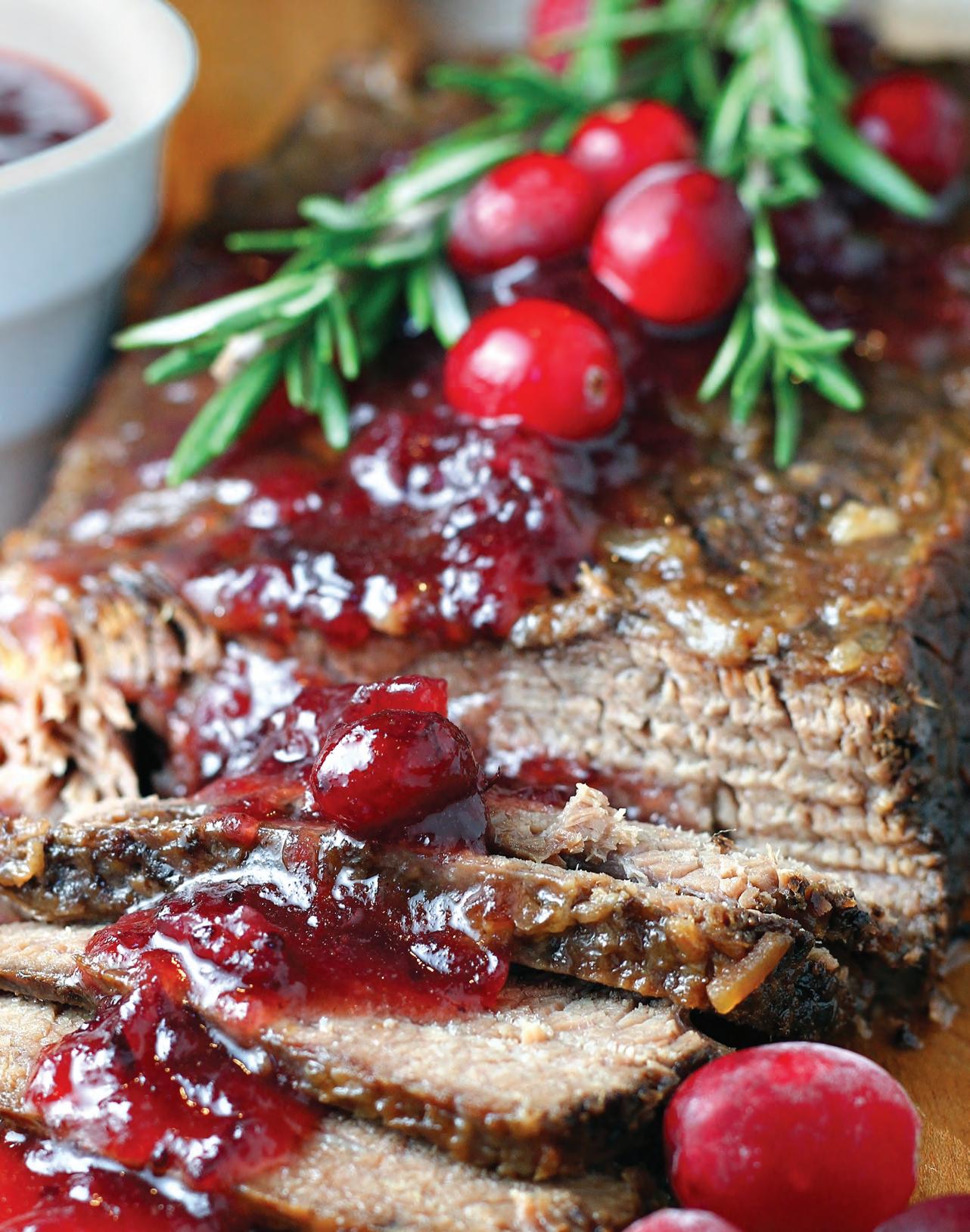

This pilaf’s bright colors make for a picture-perfect dinner and a stimulating mix of textures and sweet and savory flavors.
Heat olive oil in a large skillet or saucepan over medium heat. Add onion and cook until tender, about 5 minutes. Add cranberries and rice to pan and cook about 5 minutes more, stirring often, until rice is lightly toasted. Pour chicken broth into pan and season with salt and pepper, to taste.
Bring rice to a boil over high heat, then cover and reduce heat to low. Simmer until rice is tender and liquid is absorbed, about 22-25 minutes.
Remove pan from heat and stir in green onions, cilantro, and toasted almonds. Season with additional salt and pepper, if needed.
1 Tbsp olive oil
1/2 cup diced onion
1/2 cup dried cranberries
1 1/2 cups uncooked white or jasmine rice
3 cups low-sodium chicken broth
Salt and pepper, to taste
2 green onions, chopped
2 Tbsp chopped fresh cilantro
1/4 cup slivered almonds, toasted
Ser ves 6-8

The balsamic infused cranberry compote that tops baked brie makes this party dish creamy and smooth, with a hint of sweet, a bit of tang from the balsamic vinegar and a salty crunch from the smoked almonds.
Preheat oven to 400°. In a medium bowl, toss together cranberries, sugar, balsamic vinegar and salt. Pour onto a large, parchment lined baking sheet.
Place brie on a separate baking sheet. Place cranberries and brie wheel into the oven. Cook both for about 10 minutes. Remove the brie from the oven.
Continue cooking the cranberries an additional 5 minutes, if needed. The berries should be softened and begin to burst.
Place brie on a serving tray. Top with cranberries, smoked almonds and fresh rosemary, if desired. Cut into brie and serve with crackers or baguette slices.
1 lb brie cheese wheel
2 cups fresh cranberries
1/2 cup white sugar
1/4 cup balsamic vinegar
Pinch of salt
1/3 cup chopped smoked almonds
Rosemar y sprigs, for garnish (optional)
Crackers or toasted baguette slices, for ser ving
Ser ves 8
The editors are interested in featuring your favorite family recipes. Send your recipes (and memories inspired by your recipes) to editor@coloradolifemag.com or mail to Colorado Life, PO Box 270130, Fort Collins, CO 80527.


Roaring Fork Valley makes splash on the slopes and in kitchens
by CARLA TRACY

WHAT BEATS REVELING in Colorado’s great outdoors during wintertime? Well, adding a fabulous meal does take it over the top. Here are some activity and dining pairings on the Western Slope.
Like to heat things up when it’s teeth-chattering cold? Iron Mountain Hot Springs is making a geothermal splash with its new series of themed hot pools for adults 21 and older on its scenic property in Glenwood Springs. And it’s got a fabulous new walk-up restaurant complete with a wine, beer and cocktail bar.
WorldSprings at Iron Mountain encompasses 10 new Experience Pools – eight of which overlook the Colorado River – along with a cold plunge pool, two large freshwater pools, waterfalls and the new Sandbar Cafe. Iron Mountain offers 32 pools in all, so bring teenagers 16 and older to enjoy their own area and poolside Sopris Cafe as you get your adult time soaking in the epic views and listening to soothing music.
Each of the new pools is filled with healing mineral formulas from farflung hot springs such as Iceland, France, Japan, Bali and New Zealand. Pebble bottoms provide foot massages. The SandBar Cafe is just a few steps away.


Dive into diverse craft food, including fig and prosciutto naan flatbread topped with baby arugula and balsamic glaze; and smoked salmon sandwich on sourdough with jalapeno and cheddar cream cheese. Do try the signature trout spread. Choose from a full wine and beer list, and craft cocktails such as Blood Orange Whiskey Lemonade, Mango Mojito and Ruby Red Paloma with tequila as you drink in the essence of the Western Rockies.
“We offer things that are easy, nutritious and light to go along with our
AspenX Beach Club (top) offers beach chairs with a view of Highland Bowl and the Elk Range. The menu includes burgers inspired by restaurants at AspenSnowmass’ four mountains. Iron Mountain (left) pairs its adult-only soaks with charcuterie from Sopris Cafe.
three-hour soak windows,” said Anita Wan, food and beverage manager. “When people are in the pools, they typically don’t want a full meal, so I gear my menu items to something that is easy to eat, not messy, and that will appeal to a wide range of guests.”
The Aspen-Snowmass ski area unveild a major terrain expansion on Aspen Mountain called Hero’s at the start of the season. Not for beginners, Hero’s boasts 150 vertical acres of new expert chutes, glades and trails and is the first significant addition to what locals affectionately call Ajax since the Silver Queen Gondola was completed in 1985. Hero’s honors all those who made an impact on Aspen Mountain, including Jim Crown, who helped bring the expansion to reality.
Between runs, head to the top of Ajax to a reserved plateau where you’ll find the ASPENX Beach Club. The outdoor restaurant offers what it calls a “beachside experience,” sans the sand and the ocean.
Set upon glistening snow, ASPENX is decked out with coveted red-and-white striped cabanas, beach chairs and picture-perfect views of Highland Bowl and the Elk Range. Soak in the sun, relax and enjoy celebratory drinks, rotating DJs, and a curated food menu. It’s first come, first served.
Debuting this season, seven Signature Burgers will be grilled at seven different restaurants across Aspen-Snowmass’ four mountains.
“All seven burgers are crafted by different chefs with local, grass-fed beef and offer a nod to the eateries in which they’re served,” said Ellen Williams of Aspen Skiing Co. “The Cliffhouse Bahn Mi-style burger, for example, reflects the Asian cuisine at Buttermilk’s laid-back mountaintop restaurant. High Alpine’s Haus Burger features a pretzel bun, sliced pastrami and kraut in the mid-mountain Bavarian-style spot on Snowmass. These burgers are examples of the unique and high-quality experience and food that

Skiers and spectators alike dine and converse at the base of Aspen Mountain, consuming Wagyu double cheeseburgers,
and
guests can expect when dining on our mountains.”
Later in the season, the Little Nell resort at the base of Aspen Mountain will once again host Clicquot in the Snow. Après-ski with bubbles outdoors at Little Nell’s famous Ajax Tavern and watch skiers and snowboarders come down the mountain. Enjoy Veuve Clicquot champagne specials, Ajax Tavern’s food favorites, and live DJ music on the sun-soaked patio on Fridays, Saturdays and Sundays starting the end of February to end of March.
Situated next door to Little Nell at the base of Ajax, the W Aspen has an expansive rooftop bar and pool, the Wet Deck, popular with the après ski crowd, and the hotel claims that it’s home to the largest single-barrel bourbon and tequila collection in the state of Colorado. Imbibe the Buffalo Trace bourbon flight, Weller Full Proof, Stagg Jr., and Blantons; or go south of the border with the Old Jalisco tequila flight with El Tesoro Mundial, Paladar and Herradura. Of course, after a hard day of schussing down the slopes, you’ll be tempted by gourmet tapas. Hunker down to smoked brisket tostada with chili gastrique,
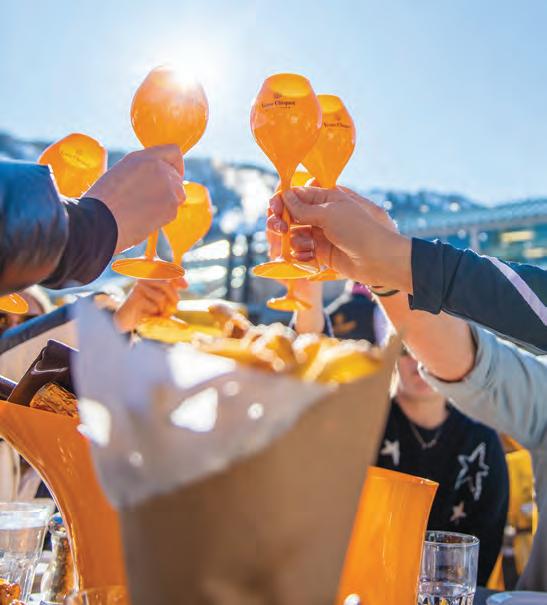

Alpin Room (top) serves scratch-made French onion soup, chicken schnitzel and caramelized onion fondue at 10,486 feet elevation, the French, Austrian and Swiss dishes conceived and prepared by Head Chef Emily Oyer (right) and her team. Oyer competed on Food Network, winning on Chopped 420.
lime crème, avocado and Thai herbs; and Oaxacan poutine with chunky house cut Yukon Gold fries, Birria short rib and queso menonita. Wait a minute. Isn’t poutine Canadian? Not here. Ole! More new winter menu items are in the works.
The W Aspen’s 39 Degrees transitions from day to night with live music from esteemed DJs. The silver nugget DJ booth featured in the lobby pays homage to the largest silver nugget ever mined. It was at Smuggler back in 1894. The W also pays homage to the Ute Native Americans who once inhabited the valley with a color palette inspired by the tribe. Aspen was originally named Ute City.
The 39 Degrees venue is the annual host to W Presents, a live electronic showcase series featuring handpicked headlining artists.
A few blocks across the historic town lies the Limelight Lounge, which offers a roaring fire, a kids’ playroom, and a daily happy hour, 3-6 p.m. with discounted food and beverages.
Enjoy live music at the Limelight Lounge 4-7 p.m. Wednesday-Sunday throughout the peak winter season. As you listen to a low-key mix of folk, rock,
39 Degrees hosts live music, its silver nugget DJ booth paying homage to Aspen’s silver mining heritage. The dinner menu includes Ribeye, Peruvian Pollo a La Brasa and Miso Marinated Salmon.
jazz, DJ music and other genres, you may dig into a menu of oven-fired pizzas and seasonal specialties. Limelight Aspen partners with the renowned Denver-based Williams & Graham to continually enhance the lounge’s cocktail offerings. Each drink pays tribute to Aspen and its rich history. One notable example is the Monarch Old Fashioned, expertly crafted with Woody Creek bourbon, Mountain Chai Syrup, and Strongwater aromatic bitters.
In addition, Limelight Aspen will bring back the ever-popular beer dinners with a new twist for the winter 23/24 season. Limelight’s chefs pair craft foods with exceptional rotating libation partners such as Telluride Brewing. From appetizers to dessert, every bite and sip offers a Col-

orado journey of flavors and sensations.
On Snowmass Mountain, the high-elevation Alpin Room welcomes Chef Emily Oyer, formerly with the world-famous Cloud Nine on Aspen Highlands, to run the kitchen and re-imagine the restaurant’s menu and personality.
Chef Oyer won Chopped 420 in 2021 and competed on Beat Bobby Flay in 2022 on the Food Network. She views food as a means for connection, and aims to bring a new warmth, energy and community to the ski-in-ski-out fine dining restaurant. Look for Alps-inspired comfort food with an elevated twist.
Pairing outdoor activities with epic meals – that’s what wintertime in the Western Rockies is all about.


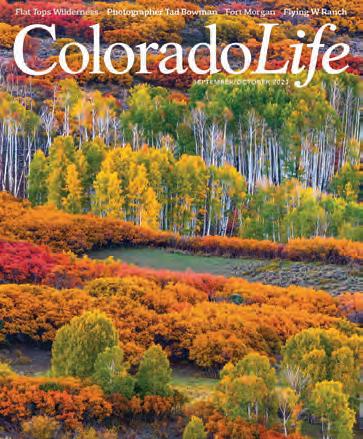








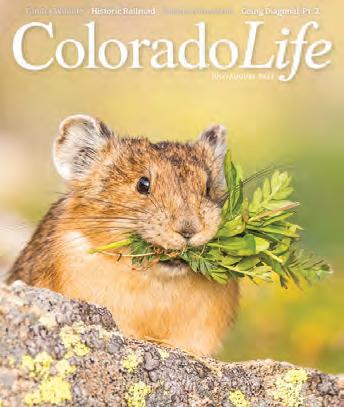


by TOM HESS
History Colorado Center in Denver unveiled a collection of World War II memorabilia, donated by the descendants of the famed, Colorado-trained 10th Mountain Division. The exhibit is one of two new ones drawing attention to the museum’s story-telling prowess.
The 10th Mountain Division prepared in Colorado for the battle they would later wage against the German Army in the snow and cold of Italy’s Apennine Mountains. Among the items donated: a fez worn by Italian dictator Benito Mussolini; bow and arrows used by a 10th Mountain archer; and art that 10th Mountain soldiers created at Camp Hale in Eagle County, Colorado, and in Italy.
Another new exhibit reveals the late Colorado photographer John Fielder’s favorite place: the Needle Mountains, a subset of the San Juans. He made that choice after traveling Colorado’s 104,984 square miles, spending 5,000 nights on the ground, and producing 7,000 images that he donated to History Colorado before his death in August.
Fielder hiked the Needles in August 2005, where he had a 25-minute “conversation” with a 250-pound male mountain goat. The goat showed up just as Fielder was preparing to photograph the Needles.
“I heard the sound of hooves clomp, clomp, clomping behind me,” Fielder wrote. “[The goat] settled down in the
A seven-minute walk from History Colorado Center is The Ponti at Denver Art Museum. The Ponti’s consulting chef is a Denver culinary star, Jennifer Kasinski. She opened Rioja in Larimer Square and co-owns Stoic & Genuine in Union Station. Lunch every day; dinner Tuesdays only. 100 W 14th Ave. (720) 913-2761.
middle of the exact place that was to be the foreground of my photograph.”
The goat remained motionless for 10 minutes, allowing Fielder to expose a dozen sheets of film of his favorite place, and favorite goat. (303) 447-8679.
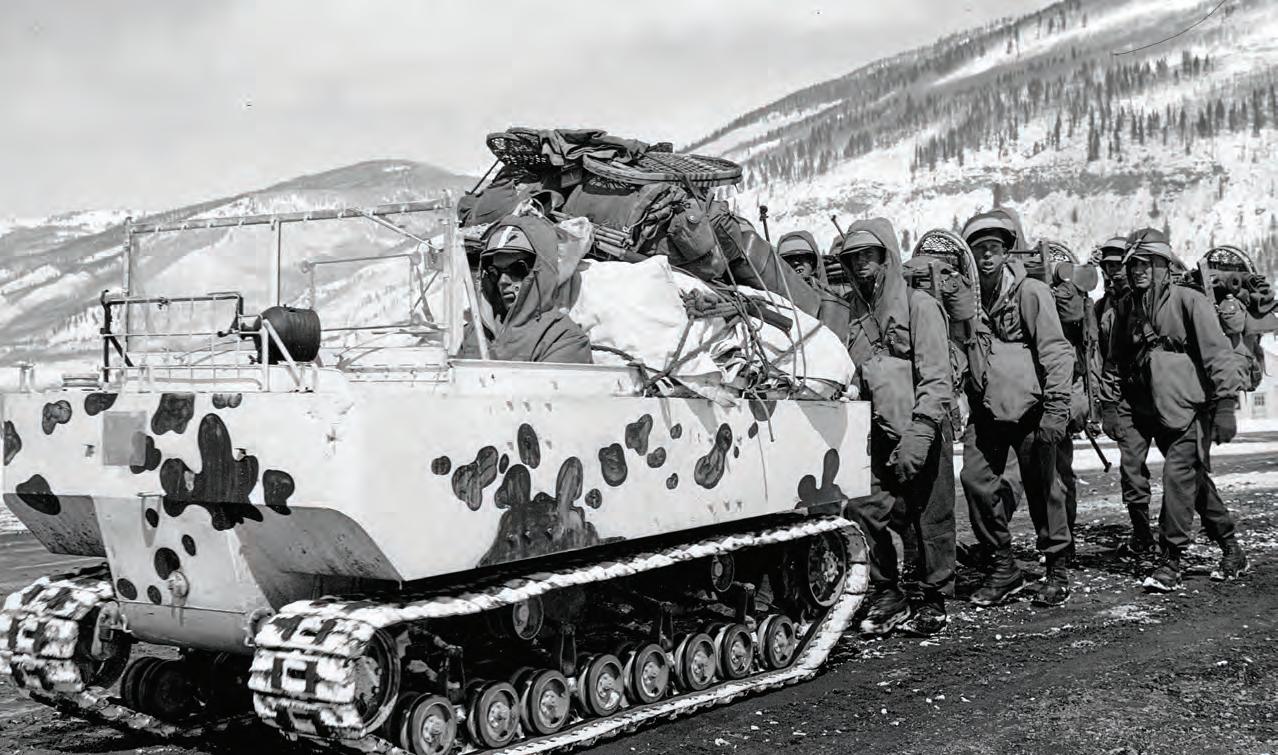
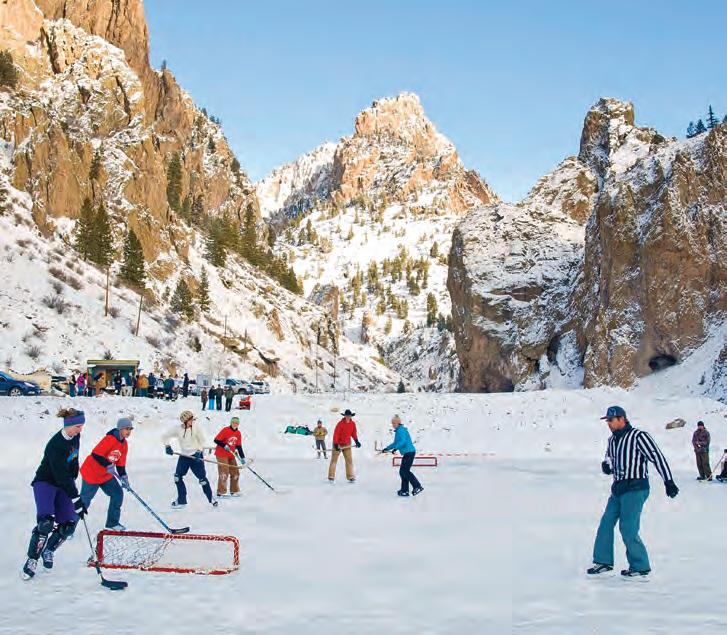
JAN. 13-14 • CREEDE
Winter is a time when Colorado can get funky, whether it’s at the Nordic god worshipping Ullr Festival in Breckenridge, Frozen Dead Guy Days in Estes Park, or the horse-drawn Ski Joring event in Leadville. Creede, on the other hand, goes allin on a Winter Olympics approach, but with a twist.
The Golden Pick Pond Hockey event matches three-person teams (Olympic teams allow six players a side) in a round-robin tournament format. The teams skate on the frozen Willow Creek drainage ponds just north of Creede, at 8,900 feet elevation, beneath the rugged 800-foot-high cliffs that surround this former silver producer, Colorado’s last boomtown.
The event started in 2006 after the city
of Durango donated a used Zamboni. Carhartt built a shed for it. The Zamboni smooths the pond ice for each game. The pond hockey goal is a foot high; the Olympic goal is four feet high.
To keep everyone warm, the tournament keeps a bonfire going throughout the day. And there’s a warming hut, too, serving food and drink.
The tournament upholds another Olympic tradition: complaining about the officiating. Two Creede business owners serve as referees, happily deflecting player ridicule after the tournament: Brian Brittain, owner of Tommyknocker Tavern, and Kip Nagy, owner of Kip’s Grill.
For information, call the Creede & Mineral County Visitor Center & Chamber of Commerce, (719) 658-2374.


Three Creede miners blasted 600 feet into solid rock in creating the museum space in 1990, providing an authentic example of the methods and techniques used in the silver rush – blasting, blacksmithing, mucking and assaying. Tours began two years later. The museum is open for self-guided tours, with headphones, all winter, Tuesday-Saturday, 10 a.m.-3 p.m. (719) 658-0811.
Int. Sportsmen’s Expo.
Jan. 11-14
• Denver
Attendees of this four-day event at the Colorado Convention Center find the latest gear and apparel, as well as the opportunity to learn from experts in the field at the largest sportsmen expos in three western states. (303) 228-8000.
Memory Cafe
Jan. 17 • Loveland
Memory Cafes are interactive social gatherings for people with mild to moderate cognitive impairment and their care partners as well as other friends in the community. Join in reminiscing, games, laughter, and music on third Wednesdays at the Loveland Library. Sponsored by Dementia Together. (253) 215-8782.
Polar Bear Plunge and 5K Run
Jan. 20 • Fort Collins
Leap into the frigid waters of Horsetooth Reservoir South Bay Swim Beach and afterward wrap yourself for warmth in a custom event towel (free to the first 500 to sign up). Larimer County Dive Rescue Team stand by in the water and on shore to ensure your safety, dish out some sweet high-fives, and if necessary, rescue you. Runners, walkers, strollers and dogs are welcome. frontrangefreeze.com/polar-bear-registration
Jan. 22-31 • Breckenridge
Artists use hand tools and their vivid imaginations, spending up to 95 hours carving 12-foot, 20-ton blocks of ice into sculptures that compete for the People’s Choice Award. In the evening, LED lights add color to the ice. Free shuttles run from event parking at the Airport Road lot and at Colorado Mountain Lodge to the Riverwalk Center in downtown Breckenridge. (970) 453-5579.

Jan. 26-Feb. 4 • Durango
The 45th annual Snowdown Durango features the theme “Peace, Love, and Snowdown.” More than 100 events fill five days, from the annual Parade of Lights down Main Avenue to adults-only fashion shows to winter sporting contests to beer dunks. Treasure hunters search for the silver bullet, following clues revealed on radio broadcasts, and earn the $250 cash prize. info@snowdown.org.
Feb. 23-24 • Aspen
This fancifully named winter festival began in 2022, founded by Norwegian DJ Kygo, who’s collaborated with U2, Selena Gomez and OneRepublic. Jack White of The White Stripes fame headlined the first year. The 2024 edition of the show takes place at Rio Grande Park downtown and will include Labrinth, who’s collaborated with Sia, and appeared on stage with Zendaya at Coachella. tinyurl.com/kcakua9v.









In Pagosa’s Red Ryder BB Gun Biathlon, participants freestyle ski multiple laps on a winding 1K track around Yamaguchi Park and shoot at targets.
The Pagosa Nordic Club supplies classic Red Ryder BB guns to the participants, each one numbered and placed on a folding table facing the paper targets arrayed on a chain-link fence that is opposite the Nordic racetrack. The racers shoot at the target that matches their race number. A
missed shot costs a racer 10 seconds. No experience with BB guns is required. Winter Olympic biathlon racers have used rifles and live rounds since the event became an Olympic sport in 1924.
Red Ryder BB guns are named for the classic “Red Ryder” newspaper comic strip. The comic strip’s artist, the late Fred Harman (1902-1982), grew up and lived in Pagosa Springs. Daisy Air Rifles introduced the Red Ryder BB gun in 1940.



Soak your aching muscles – remember that twitch in your strained calf muscle on lap 16 at Yamaguchi Park? – and relax in a terraced pool alongside the San Juan River. The healing waters come from down deep. The Guinness Book of World Records lists Pagosa’s hot springs as the “Deepest Geothermal Hot Spring,” at a depth of 1,002 feet. 323 Hot Springs Blvd. (800) 225-0934.
After vigorous physical activity, such as freestyle skiing and shooting, replenish with smoked protein with a lavish slathering of barbeque sauce is advised. Square Top serves beef ribs on Sundays, smoked burgers on Wednesdays, and pork ribs on Fridays. Smoked meat sandwiches every day include pulled pork, sausage and turkey. 1 Pines Club Place. (970) 398-5267.

Schedule your stay today!
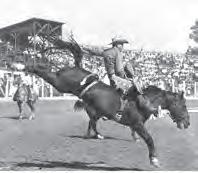





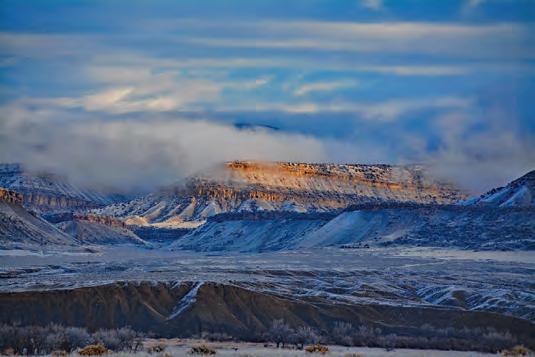





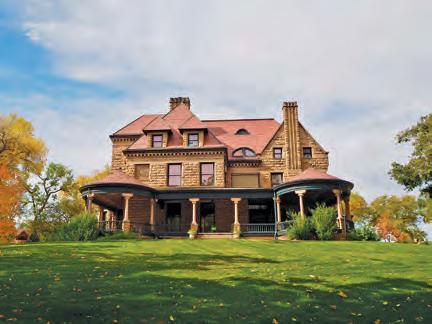










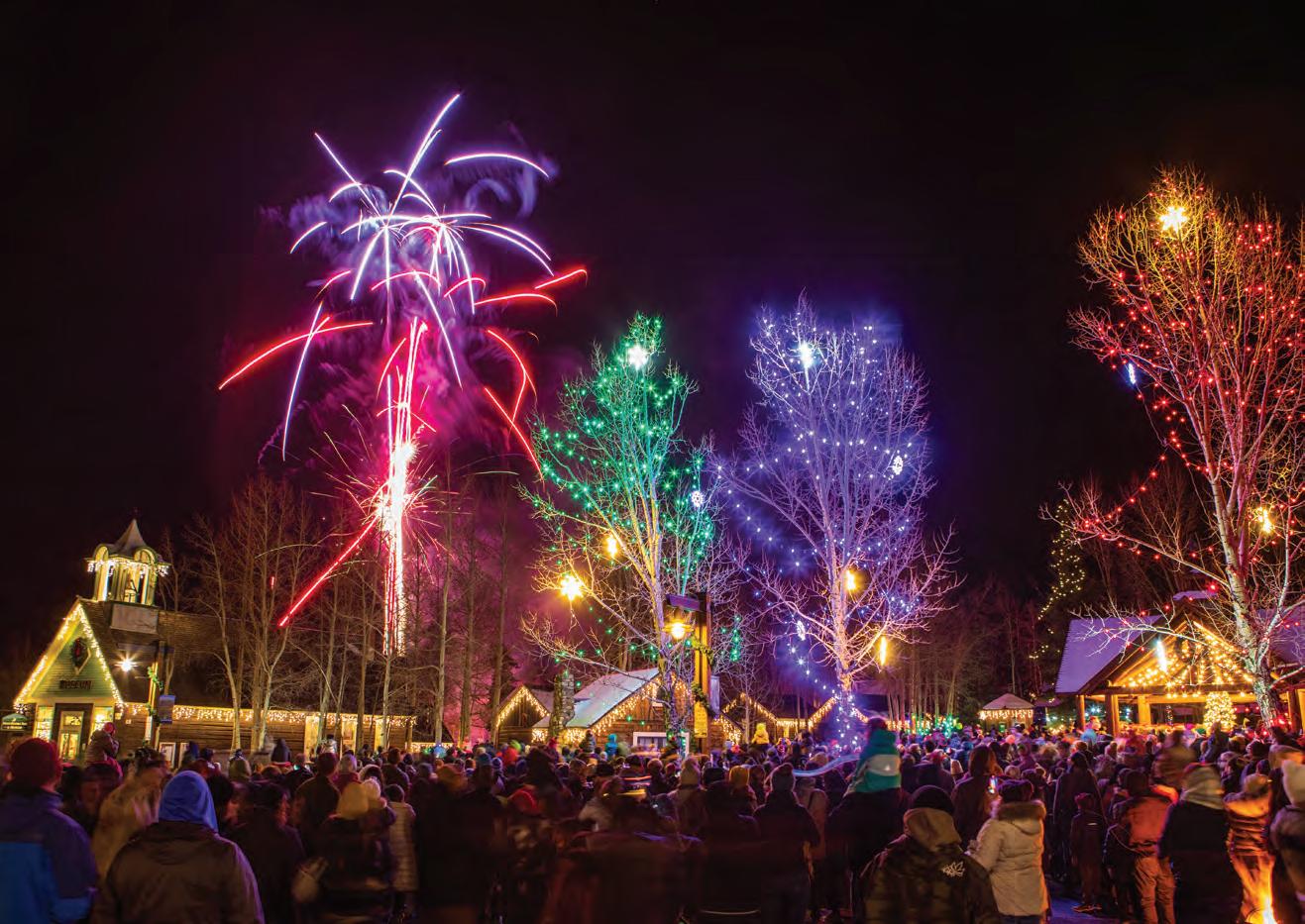

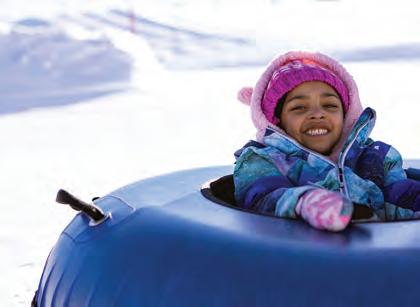

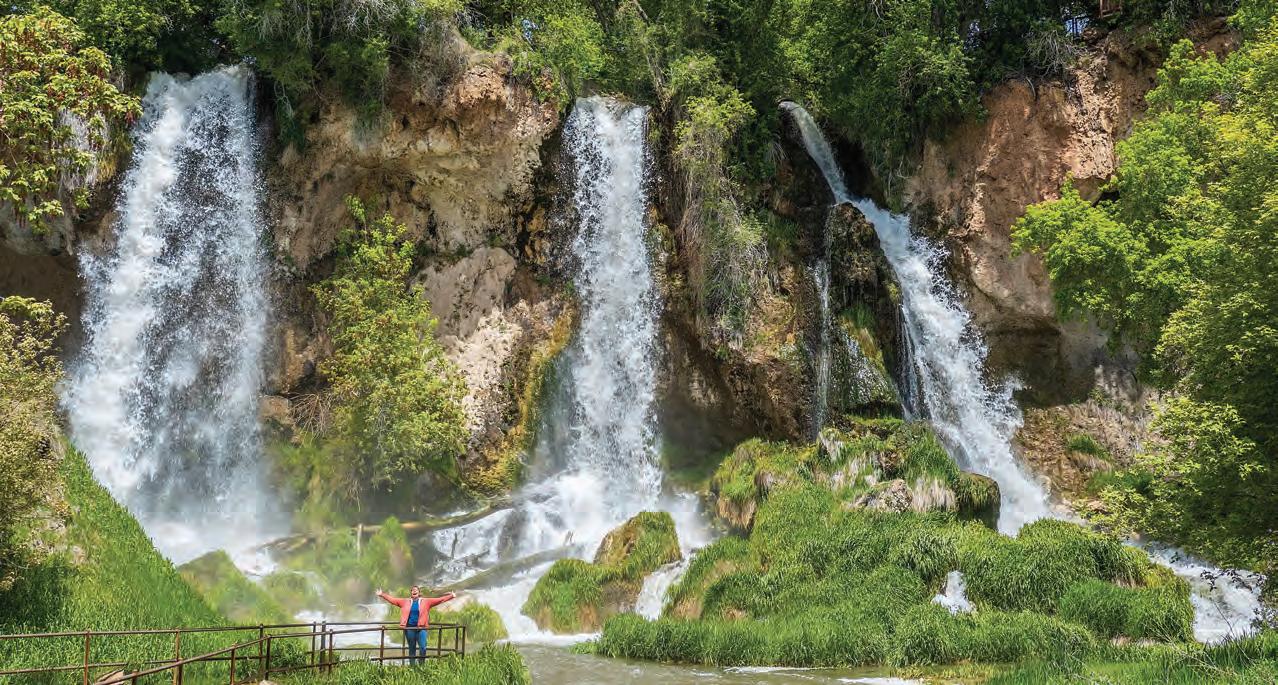
by DAN LEETH


LOCATION
TENT/RV SITES
ACTIVITIES
Waterfalls, hiking, birdwatching, big-game sightings
Smallest state park offers triple waterfalls, trails and scenic campgrounds
THE LEAVES SHADING my campsite gently rustled in the afternoon breeze. Songbirds crooned from above, their bodies cloaked by the overhanging branches. In the background flowed the creek, its current sloshing softer than Brahms’ “Lullaby” as it melodically washed over streambed rocks. While calm and serene here, a few hundred yards upstream this same creek offers a more robust opus as it thundered over a 70-foot cliff with the fervor of Tchaikovsky’s “1812 Overture.”
My creekside campsite lay in Rifle Falls State Park. Colorado’s smallest state park
encompasses a 48-acre strip along East Rifle Creek, 12 miles northeast of the town of Rifle. For campers, the park offers a dozen RV sites with electric hookups and seven walk-in tent sites, all nestled in a leafy, riparian setting.
Most visitors come to the park to simply ogle the triple falls, which plummet over a limestone cliff in a misty cascade of aquatic splendor. The site has drawn tourists since the late 1800s, when a local entrepreneur opened Rifle Falls Ranch and began charging admission to view what was then a broad, single cascade. The triple split formed in 1910 when the town of Rifle diverted some of the creek’s flow into a hydroelectric generating plant, one of the first such operations in Colorado. The plant closed in 1952 with the remains of its stone walls still standing beside the cliffs below.
While gazing at the falls is the prime reason for a visit to the park, there are plenty of other activities to warrant a camping sojourn. There’s trout fishing in the stream both above and below the falls. The riparian area is a birdwatcher’s paradise with bald eagles and osprey often spotted nearby. Deer, elk, coyote and presumably bears wander around the area, and three species of bats reside in cliffface limestone caves.
For those of us with a hankering to hike, the park offers three trails to tread. About two miles long, the Squirrel Trail follows the stream down through the tent camping area, crosses over on a bridge and continues up and along the cliffs before reaching an irrigation canal and small diversion dam. Considered moderate, it’s best suited for experienced hikers lacking qualms about hiking on loose, slanted terrain.
The popular 1½-mile Coyote Trail switchbacks up the cliff beside the falls, offering side and rooftop views of the flow surging over the cliffs. Along the lime-
stone wall, the trail passes several shallow caves and mini alcoves. Up top, one sees the creek split into its trio of falls, one of which pours from a massive pipe that once fed the hydroelectric plant.
The Bobcat Trail offers a four-mile, outand-back hike along East Rifle Creek from the park to Rifle Falls State Fish Hatchery. Along the way, anglers frequently can be found casting lines into the cattail-lined ponds found upstream of the falls. About halfway to the hatchery, the trail passes the Cascades where the creek tumbles through lush, slanted terrain. Dogs and fishing are not allowed between the Cascades and the hatchery. At the facility, a fun thing for visitors to do is toss a handful of fish food into the current and watch the voracious trout whip the water into a churning froth reminiscent of grandma’s old Maytag washer.
Of course, the prime reason to camp at Rifle Falls State Park is to admire the waterfall. Early rising campers can sit back and watch as the morning light clears the cliffs and edges across the face of the

falls. Soon, the people watching begins. Day trippers arrive, pull out their cell phones and shoot selfies as they pose before the cascading mist. A few arrive with professional photographers like one ball-gowned Hispanic lass I encountered who came for shots commemorating her quinceañera (15th birthday) celebration.
There’s one more thing I find quite refreshing to do out here. Rifle Falls State Park is a place where I can just quietly sit back at my campsite and savor the serenade of rustling leaves, crooning songbirds and the nearby creek melodically sloshing by.
Open year-round, Rifle Falls campground offers 12 drive-up RV/ tent sites with electric hookups and seven walk-in tent sites with bear boxes. Reservations (cpw.state.co.us, 800-244-5613) are required.
Electric sites range from $3036 per night and tent sites $22-28 depending on season, plus an additional $10 per day vehicle pass. Showers and dump station are available at Rifle Gap State Park, four miles away.

Questions on p 14-15
1. The Last of Us
2. Oil
3. Bill Engvall
4. WNBA
5. The Stanley Hotel
6. a. Lock ‘N Load
7. b. Homicide Hunter
8. c. Chris Pratt
9. b. Greendale
10. a. Honey, I Shrunk the Kids: The TV Show
11. True
12. False (Vanessa is played by actress Nancy Travis)
13. True
14. False (it’s set in Wild Horse, and the setting was chosen before Peterson became a base for the Space Force)
15. False (this is a fact about Family Guy)
Trivia Photographs
Page 14 Scene from The Last of Us; comedian Bill Engvall.
Page 15 The late comedian Robin Williams joined Denver Broncos cheerleaders.
• Next to that Colorful Colorado sign (selfie!)
• After you hucked that backy off a cornice
• Around the campfire
• Over the backyard fence
• In line for tickets at the big game (go local sports!)
• Between the opening act and the headliner
• The front seat of a pickup on your way to work
• The tailgate of a pickup after youʼre done with work
• The gun range (of course)
• The gun store (of course)
• The gun show (OK we get it)
• In the checkout line at the organic grocer
• When you drop your kids off
• After that meeting that couldʼve been an email
• While youʼre mucking the stalls
• After anyone starts struggling emotionally
• Before anyone starts struggling emotionally
• The trailhead (Colorado has more than 1,400 of 'em!)
• While youʼre setting up a ground blind
• During potlucks at your house of worship
• When youʼre programming the code to your new quick access safe
• Over burgers (soy, beef, bison, whatever)
• Waiting for a double oatmilk latte
• At the mechanic
• With your parents
• Around the kitchen table
• At the pool, lake, beach or swimming hole
• The local brewery (you know the one)
• Walking your dog to the dog park to play with dogs
• Everywhere not on this list too
Want to prevent gun violence? Talk about guns. Talk about how they’re secured. How they’re used. And how to make sure the wrong people don’t get them. Because there are simple actions everyone can take to keep Colorado safe.

by JOSHUA HARDIN
There may be no better sign of winter on the Front Range than when Pikes Peak dons its first coat of snow and the surrounding region becomes a wonderland.
The peak’s namesake, Zebulon Pike, and members of his expedition sighted and tried climbing the summit in November 1806. After two days pushing through waist-deep snow and without food, they made it as far as the less lofty Mt. Rosa before giving up the ascent.
Thankfully, more than two centuries later, visitors are more likely to experience holiday cheer around the peak which Pike declared unclimbable.
The western border of Colorado Springs and the festive hamlet of Manitou Springs sit snug under Pikes Peak, rekindling in their people a childlike sense of wonder.
Growing up in Colorado meant knowing Santa Claus lived at the North Pole – a theme park designed by former Walt Disney artist Arto Monaco. The park began in the 1950s as a village of 12 alpine buildings, including a home for Mr. and Mrs. Claus and several craft souvenir shops.
In the ensuing years, the North Pole grew to encompass more than two dozen rides, including a Polar Express-style railroad, tramway and Tilt-A-Whirl. Riders can fly on Rudolf and the rest of Santa’s eight reindeer amongst horses and chariots on a historical 1919 country-fair style carousel. I’ve tried all the rides and my personal favorite as a kid was (and still is) the giant rotating Christmas tree.
Now that I’ve grown up, I usually try to schedule at least one winter day in downtown Manitou Springs to drink from its free, invigorating springs, like the soft-watered Lithium Spring said to promote mental health. This helps clear my head

for another perennial pastime – playing the nearby Penny Arcade’s vintage video games, pinball and Skee-Ball. If I have a camera with me, it’s also fun to take candid shots of people trying their luck on one of the arcade’s amusements.
Architectural wonders lie under Pikes Peak like a Whoville, without a conniving Grinch lurking above. While in Manitou, one of my preferred places to stay is the Queen Anne-style Cliff House, built in 1874. The hotel’s holly-decked staircases and Christmas tree displays create an unmistakably festive ambiance. For Victorian-era Christmas fans, the Dickenslike Miramont Castle offers guided tours. Once a home for French-born Catholic priest Jean Baptiste Francolon, the eclectic 1895 estate features intricately decorated rooms and halls illuminated by thousands of lights that might even make Scrooge smile.
Further scenes of the winter light extend to Colorado Springs, where lines of illuminated trees lead to the Broadmoor Hotel’s West Tower, flourished with a massive, red-bowed wreath and topped by a shimmering snowflake. Photographing the building during the “blue hour,” the hour before the sun rises or after it sets, makes for an interesting study of sparkling multicolored bulbs flashing against a vivid sky.
Pikes Peak itself is the centerpiece for some of my most prized photography getaways. The towering red rock formations and green piñon pines of Garden of the Gods create a breathtaking contrast of hues when covered with a dusting of white, crystalline snow. A serene hike or drive through this natural cornucopia provides multiple vantage points to frame the peak between the jutting rocks and twisting trees.
Rampart Range Road (which begins near Garden of the Gods) or the Pikes Peak Highway (which starts near the North Pole) offer a closer look. I’m fond of a particular pullout on Rampart Range Road that positions the peak alongside an icy stone wall where the trees cling precariously.
When I’m not in the mood for driving, taking the Cog Railway is a more relaxing way to reach the peak’s summit. The bonus of eating freshly baked doughnuts served at the new Summit Visitor Center (a continuation of a tradition of serving fried food at previous Summit House incarnations) is a sweet way of celebrating reaching the top. If only Pike’s men knew such a treat awaited them, they might not have turned back.
From whatever angle you chose, and in whatever season, Pikes Peak is a perfect setting for a classic country winter. With so many photogenic ways of celebrating the season, the region serves up a gold rush of treasured memories we can renew yearly in person and on film.

